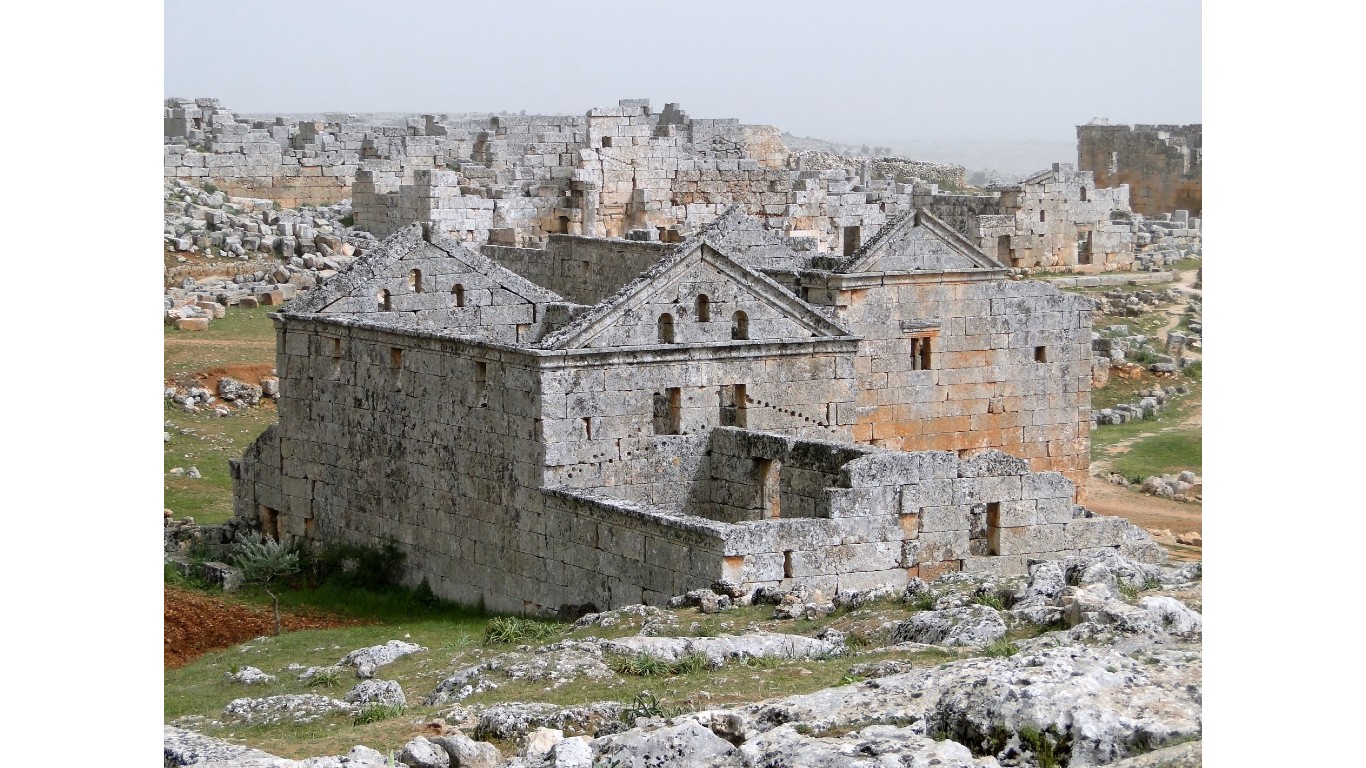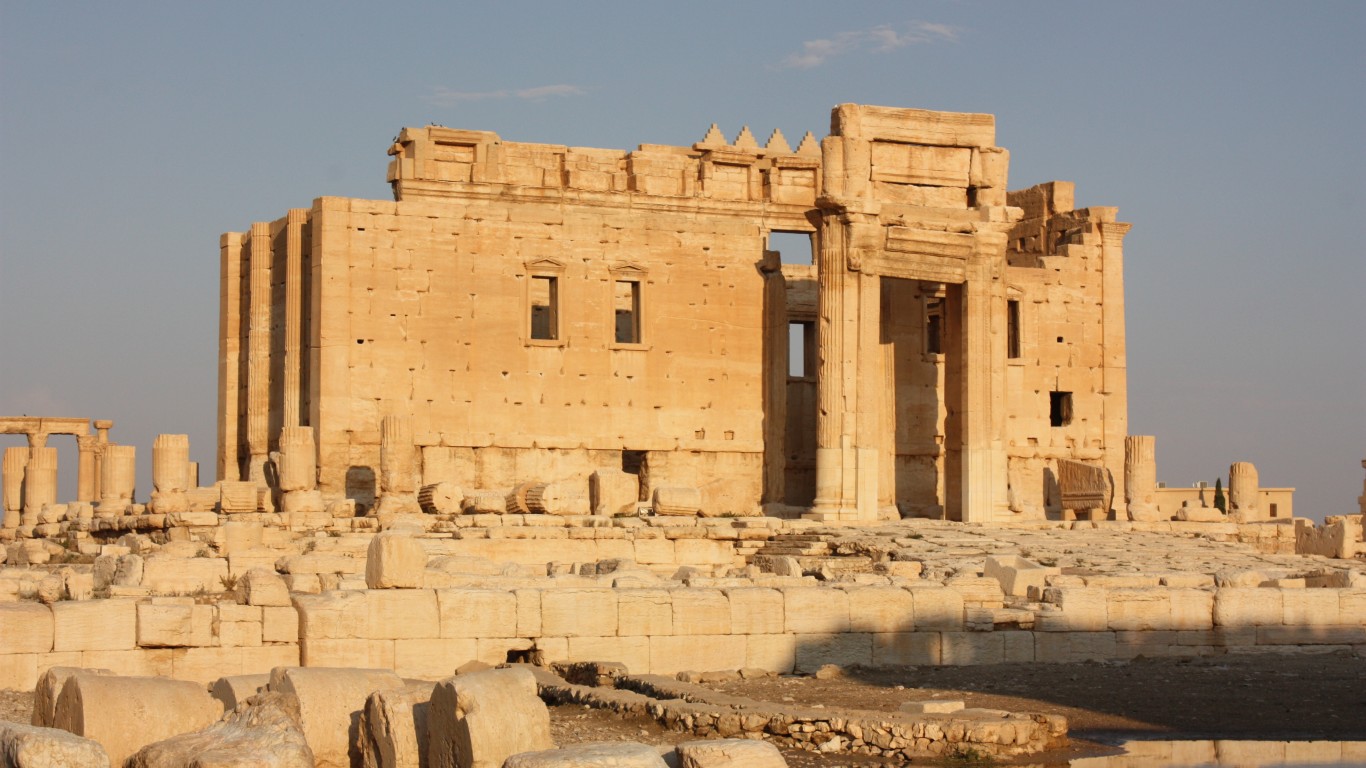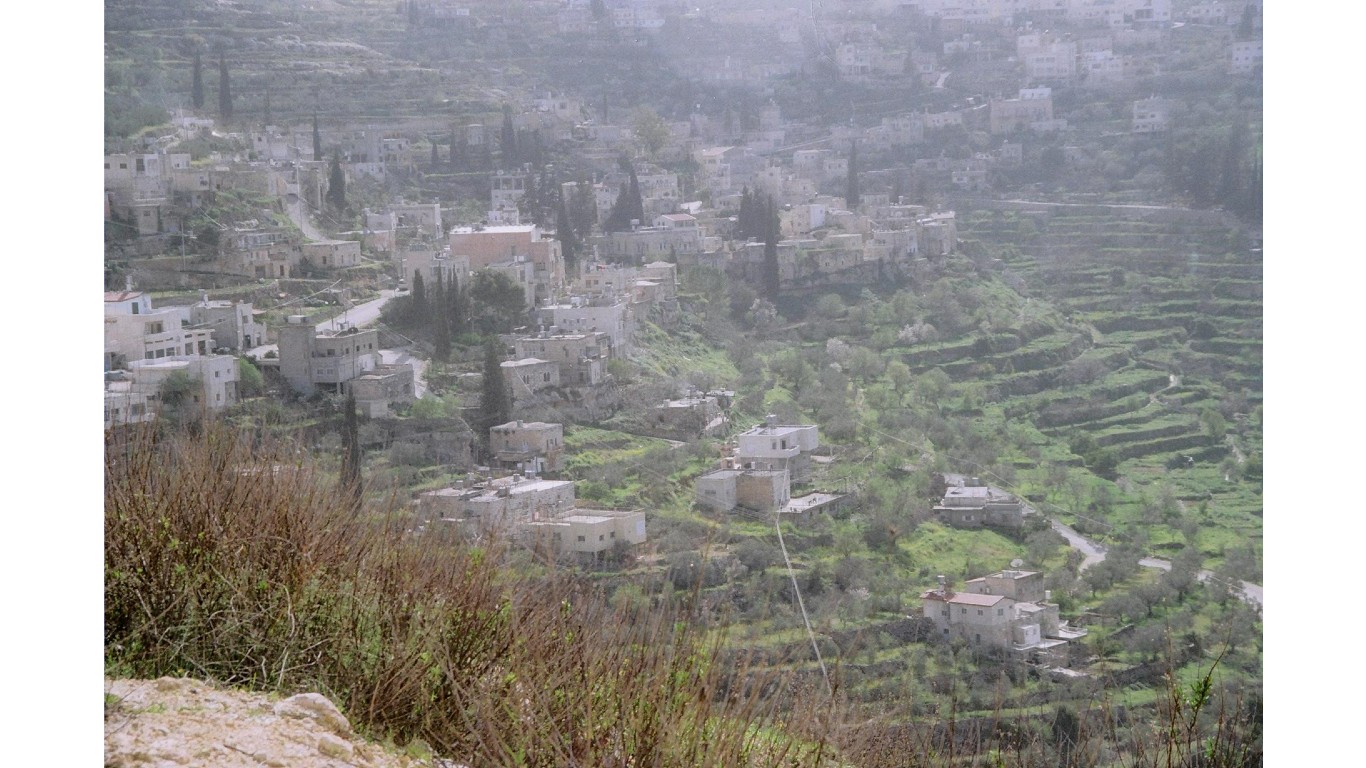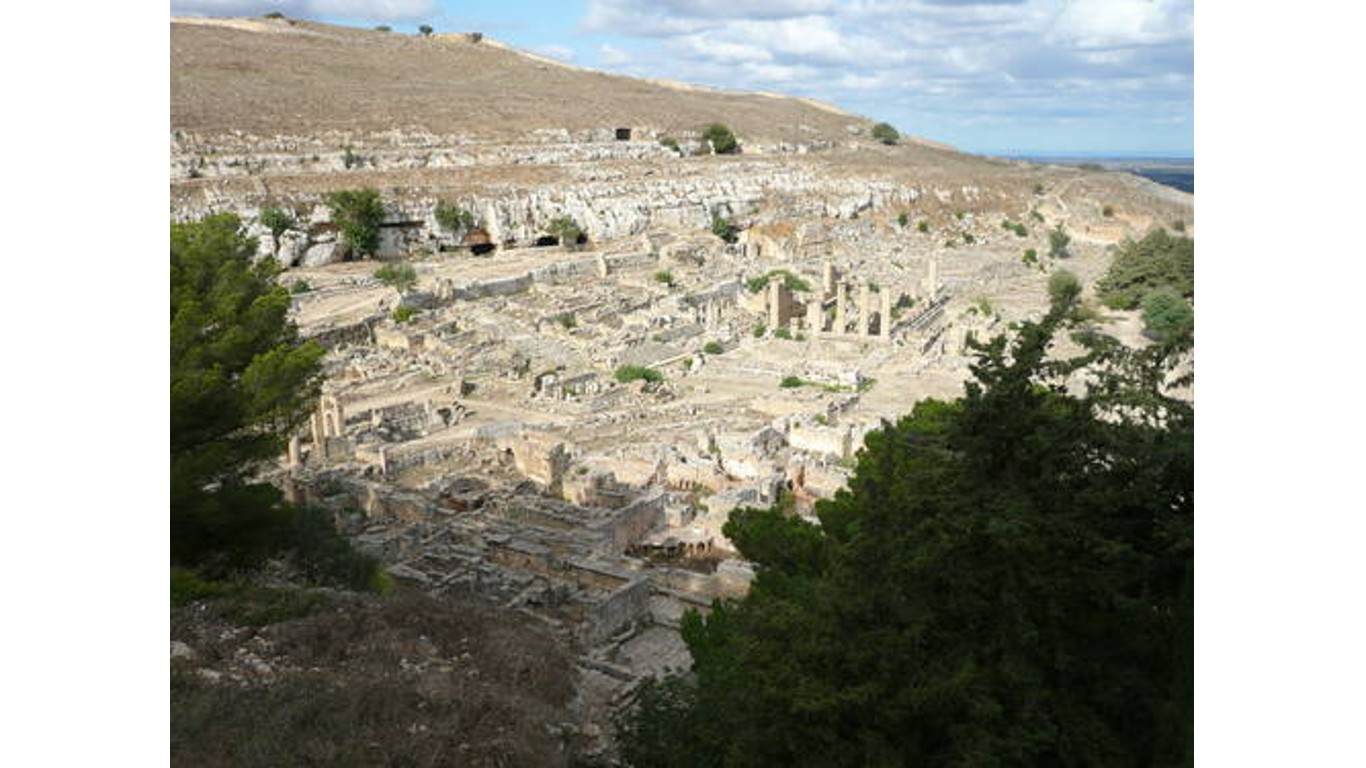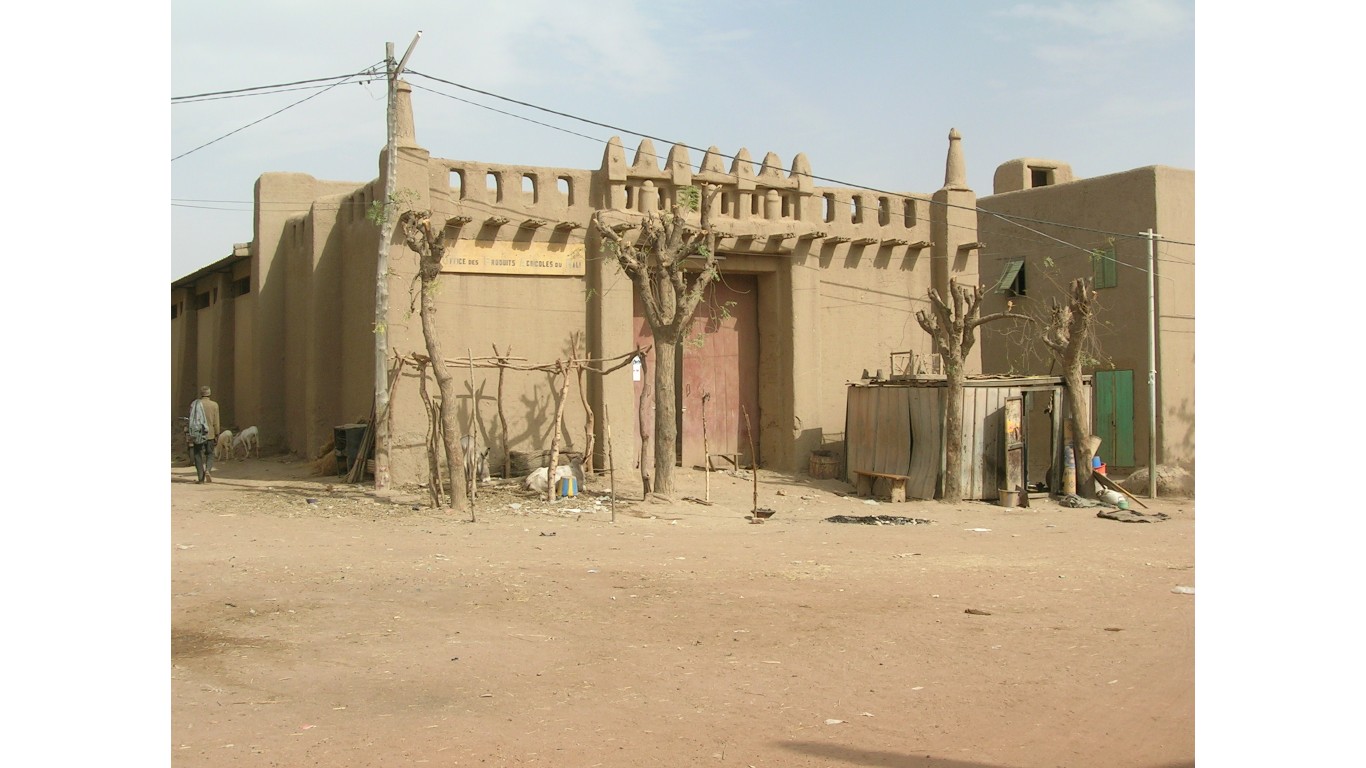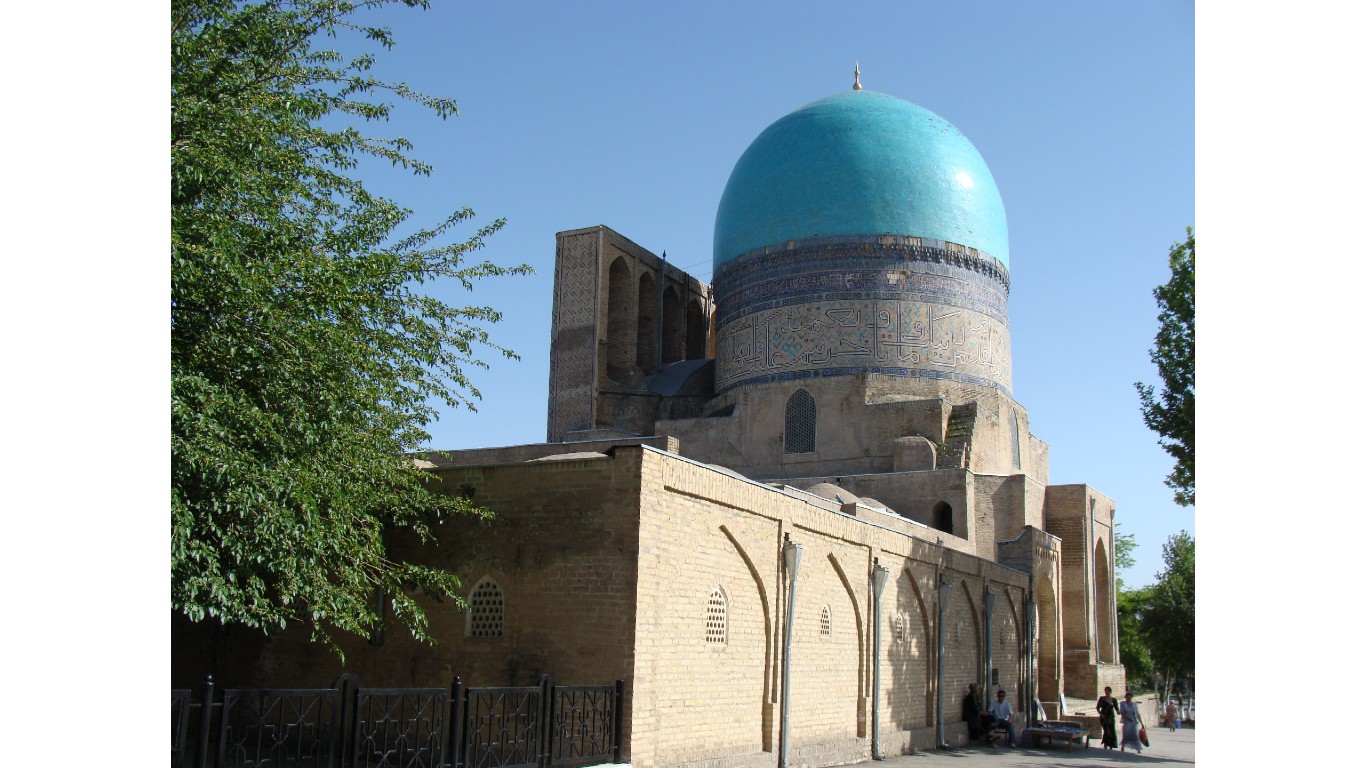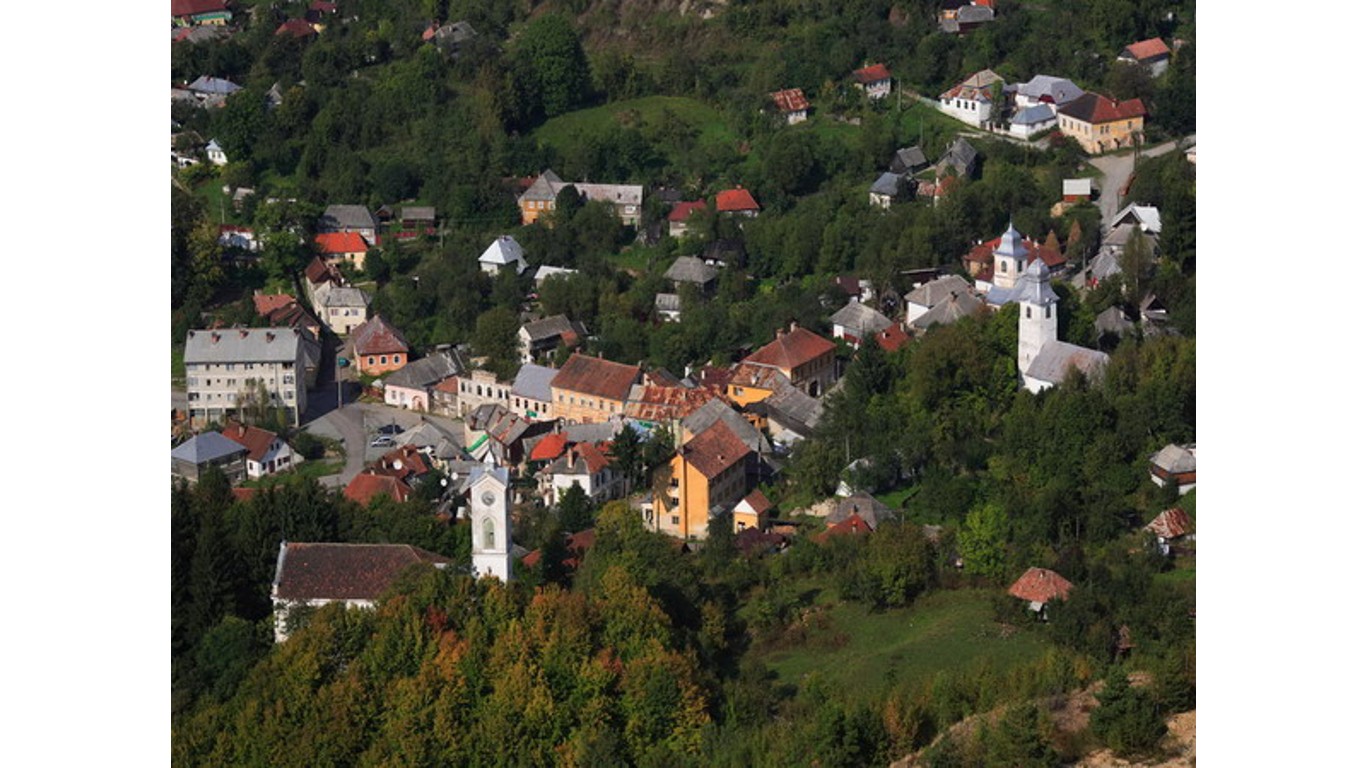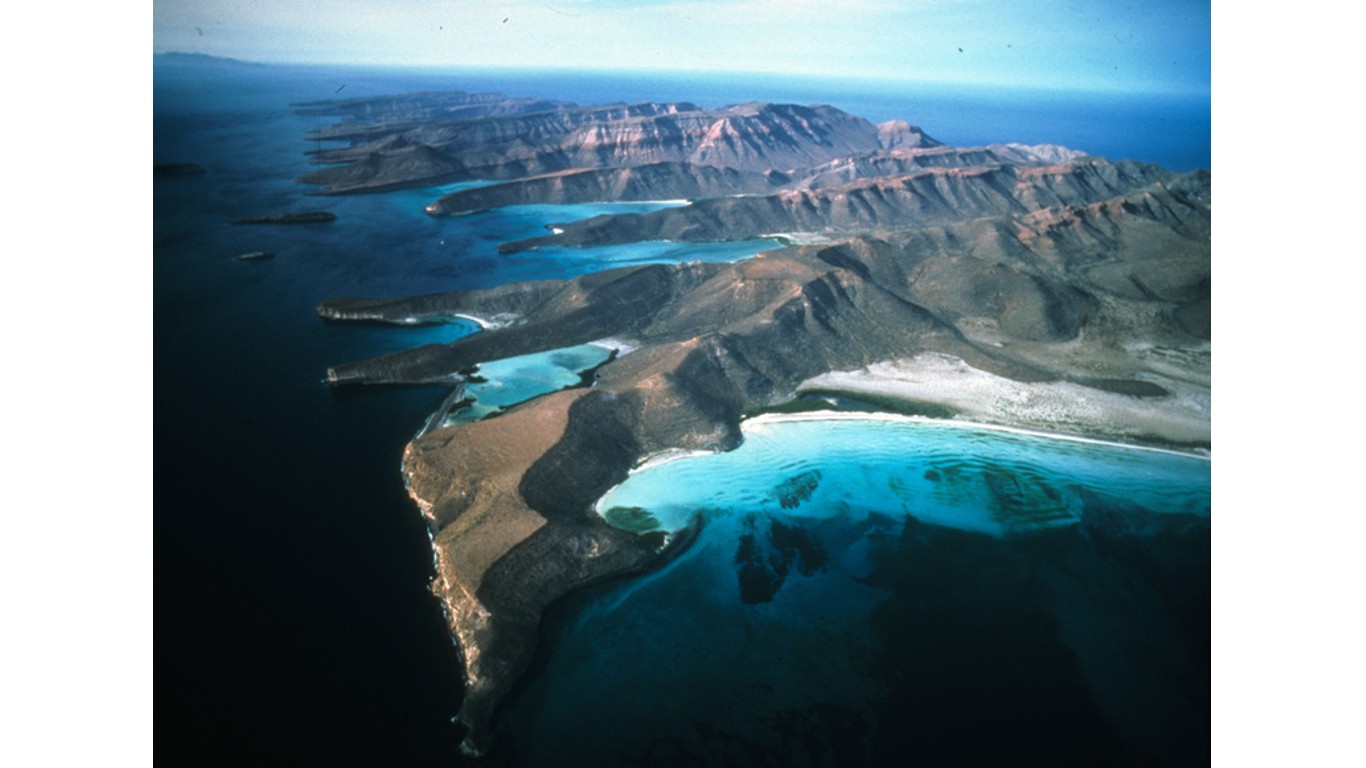
The stated mission of UNESCO seeks to “encourage the identification, protection and preservation of cultural and natural heritage around the world considered to be of outstanding value to humanity.”
World heritage sites include places as divergent as the pyramids of Egypt, the Serengeti in East Africa, rainforests in Madagascar, the Baroque cathedrals of Latin America, and the Great Barrier Reef in Australia. (This is the most beautiful natural wonder in every state.)
UNESCO’s task to preserve humankind’s heritage is a daunting one, however. Some of the sites are in danger, imperiled by armed conflict, increasing urbanization and tourist activity and development, pollution, poaching, natural disasters such as earthquakes and flooding, and climate change. (Here are 28 amazing places that could be underwater by 2050.)
To identify sites currently at risk, 24/7 Wall St. reviewed UNESCO’s List of World Heritage in Danger. There are 52 sites the World Heritage Committee has decided to include on the list. Sites are listed in order of year of designation as World Heritage in Danger.
UNESCO divides humanity’s treasures into cultural and natural sites. There are sites in each category with ascertained or potential dangers. Ascertained dangers are specific and proven imminent threats such as serious deterioration for cultural properties and human encroachment on natural properties. Potential dangers can include lack of conservation policy for cultural properties and development projects near or within a natural property.
UNESCO believes that just putting a site on its List of World Heritage in Danger helps alert the international community to the seriousness of the danger of a given property and the need for prompt action.
Every continent except for Antarctica has endangered sites, though most of the sites are in Asia and Africa. Syria has the most sites on the list with six, followed by Libya with five, and the Democratic Republic of the Congo with four.
Click here to see the UNESCO world heritage sites in danger
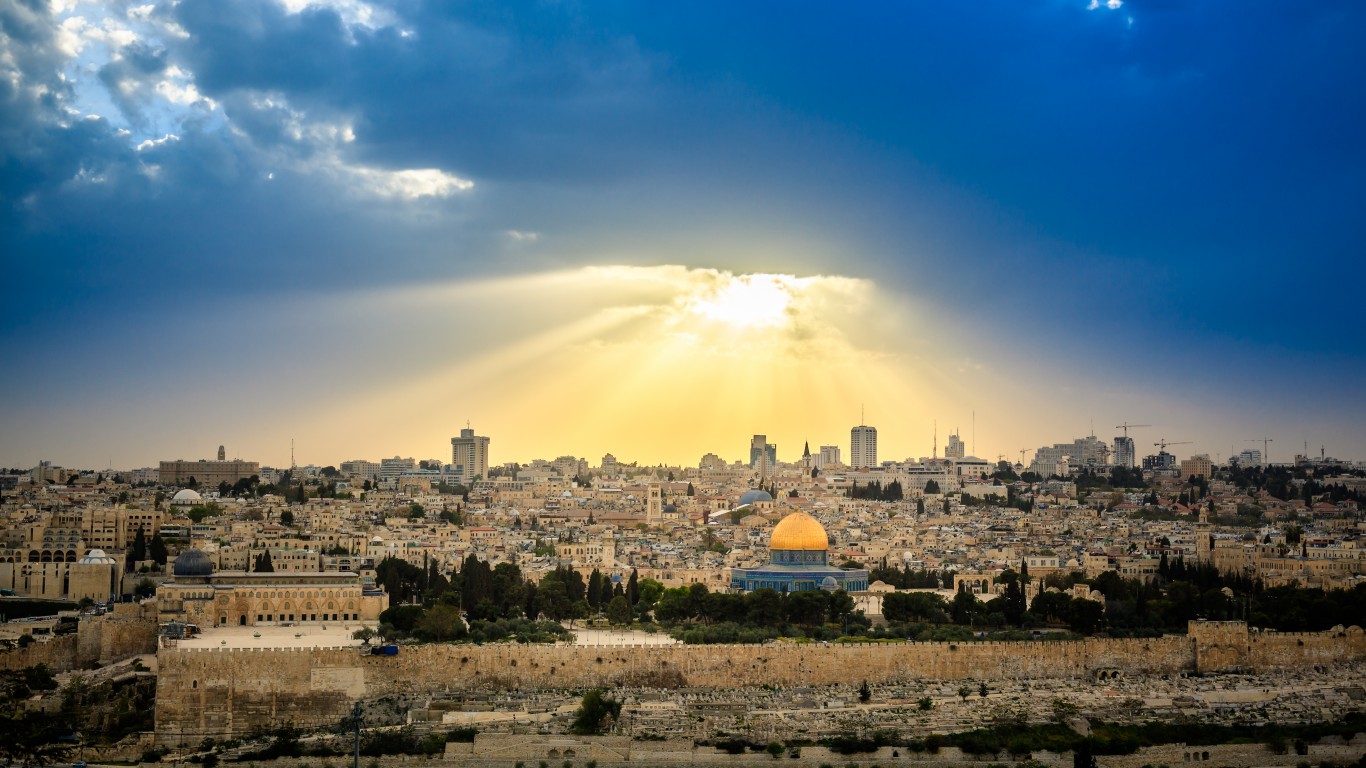
Old City of Jerusalem and its Walls (1982)
> Location: Jerusalem (Site proposed by Jordan)
Jerusalem holds a special place for three of the world’s major religions: Judaism, Christianity, and Islam. The World Heritage Centre is processing an action plan to safeguard the Old City by using best practices to improve housing and living conditions of residents while respecting and preserving areas of historical significance.
[in-text-ad]
Chan Chan Archaeological Zone (1986)
> Location: Peru
The Chan Chan Archaeological Zone in Peru contains the remains of a city of the Chimu Kingdom that reached its zenith in the 15th century before it was conquered by the Incas. It is important because of its sophisticated urban organization. It was first put on the List of World Heritage in Danger in 1986 because of its vulnerability to extreme climatic events. Now it is threatened by human relocation and infrastructure development.
Mount Nimba Strict Nature Reserve (1992)
> Location: Côte d’Ivoire
Mount Nimba Strict Nature Reserve is near the borders of Guinea, Liberia, and Côte d’Ivoire. Dense forests cover the mountain’s slopes, home to chimpanzees and toads, and the region is rich in fauna, which has been the object of poachers. Land development and controlled fires also threaten the environment.
The Air and Ténéré Natural Reserves (1992)
> Location: Niger
The Air and Ténéré Natural Reserves in Niger is Africa’s largest protected area, at more than 19 million acres. The region is known for its photogenic landscapes and variety of plants and animals. The biggest threats to its integrity are poaching and illegal grazing.
[in-text-ad-2]

Virunga National Park (1994)
> Location: Democratic Republic of the Congo
Virunga National Park encompasses 1.9 million acres of swamps, steppes, and snowfields. It is home to mountain gorillas, hippopotamuses, and a variety of birds. Two of Africa’s most active volcanoes — Nyamuragira and Nyiragongo — are located there. Management of the area is complex and can be dangerous as some of the park’s authority agents have been killed. The park needs better surveillance to oversee boundaries and combat poachers. Deforestation is also a concern.
Garamba National Park (1996)
> Location: Democratic Republic of the Congo
Garamba National Park, at 1.2 million acres, boasts impressive savannas and grasslands, and its swampy area is the habitat of elephants, giraffes, hippopotamus, and the very rare white rhinoceros. The park is surrounded by three delineated hunting grounds that help reduce poaching. UNESCO believes the park needs a comprehensive management plan.
[in-text-ad]
Manovo-Gounda St. Floris National Park (1997)
> Location: Central African Republic
You’ll find black rhinoceroses, elephants, cheetahs, leopards, red-fronted gazelles, buffalo, and waterfowl present on the savannas and floodplains of Manovo-Gounda St. Floris National Park, which spans 4.2 million acres. Pressure from grazing and threats from poaching have highlighted the need for better park management.
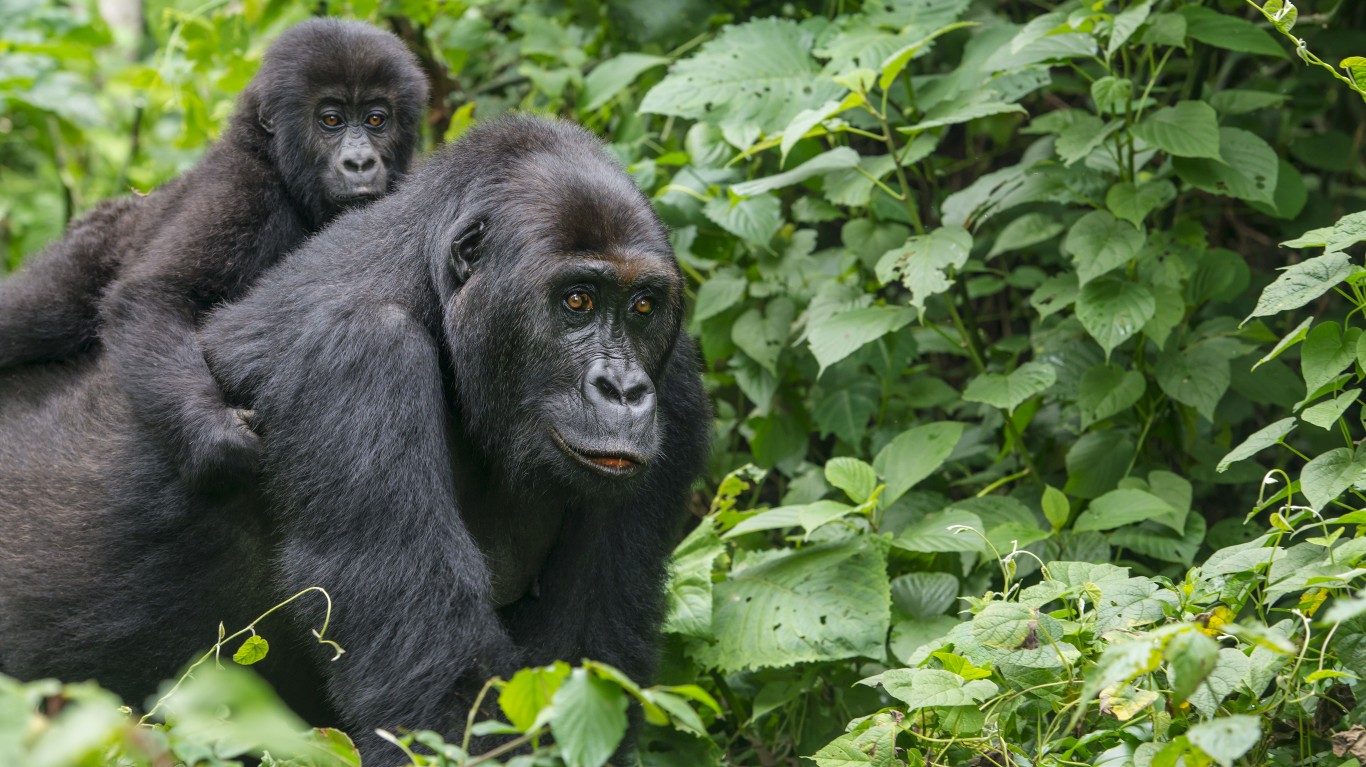
Kahuzi-Biega National Park (1997)
> Location: Democratic Republic of the Congo
In Kahuzi-Biega National Park, you’ll find a tropical forest that’s home to one of the last groups of eastern lowland (graueri) gorillas. There also are two extinct volcanoes, Kahuzi and Biega, in the 1.4 million-acre park. When the park was created in 1975, it included neighboring villages. That has created ongoing border disputes and interfered with conservation efforts.
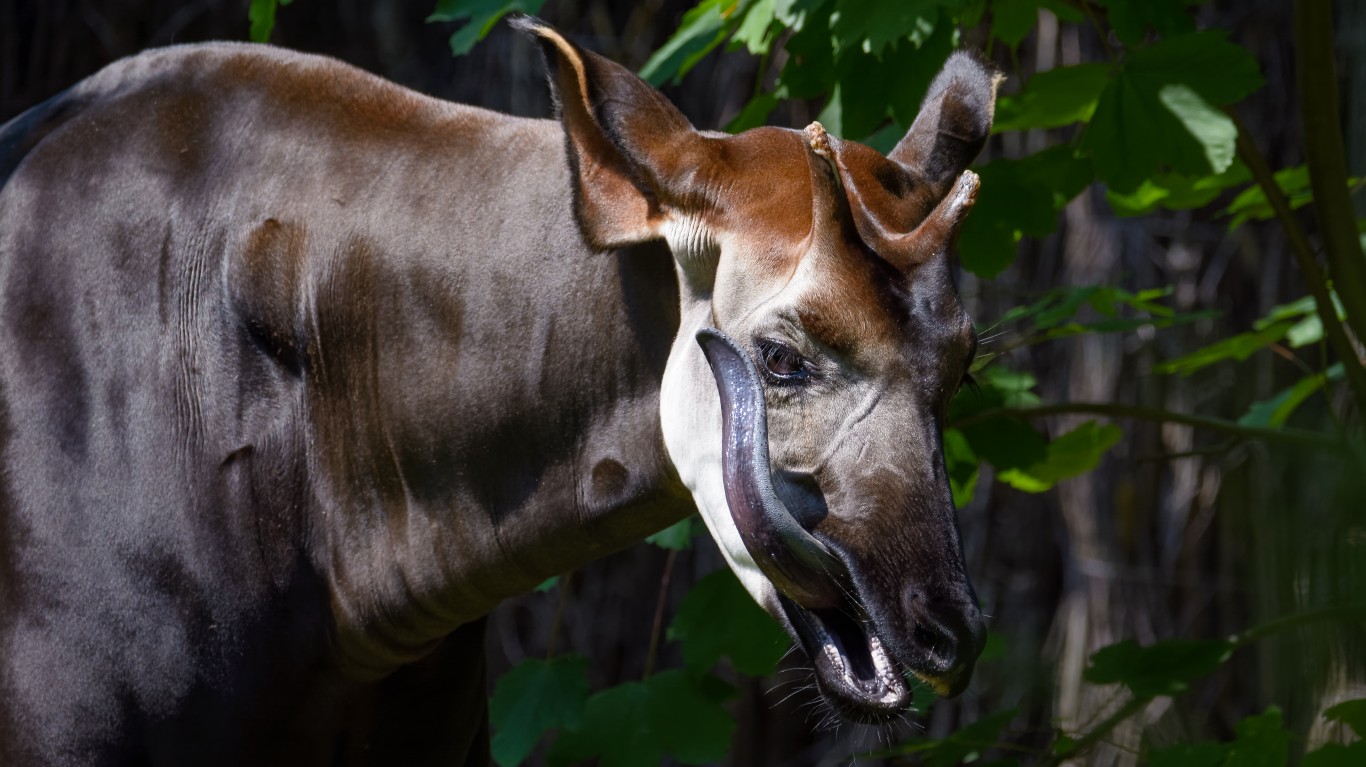
Okapi Wildlife Reserve (1997)
> Location: Democratic Republic of the Congo
The Okapi Wildlife Reserve is in the northeast part of the Democratic Republic of the Congo. The reserve features spectacular waterfalls on the Ituri and Epulu rivers, dense evergreen forests, and swamp forests. It is home to many threatened species of primates and birds, as well as about 5,000 of the estimated 30,000 okapi, or forest giraffe, living in the wild. The challenges facing management are immigration control and encroachment by agriculture.
[in-text-ad-2]
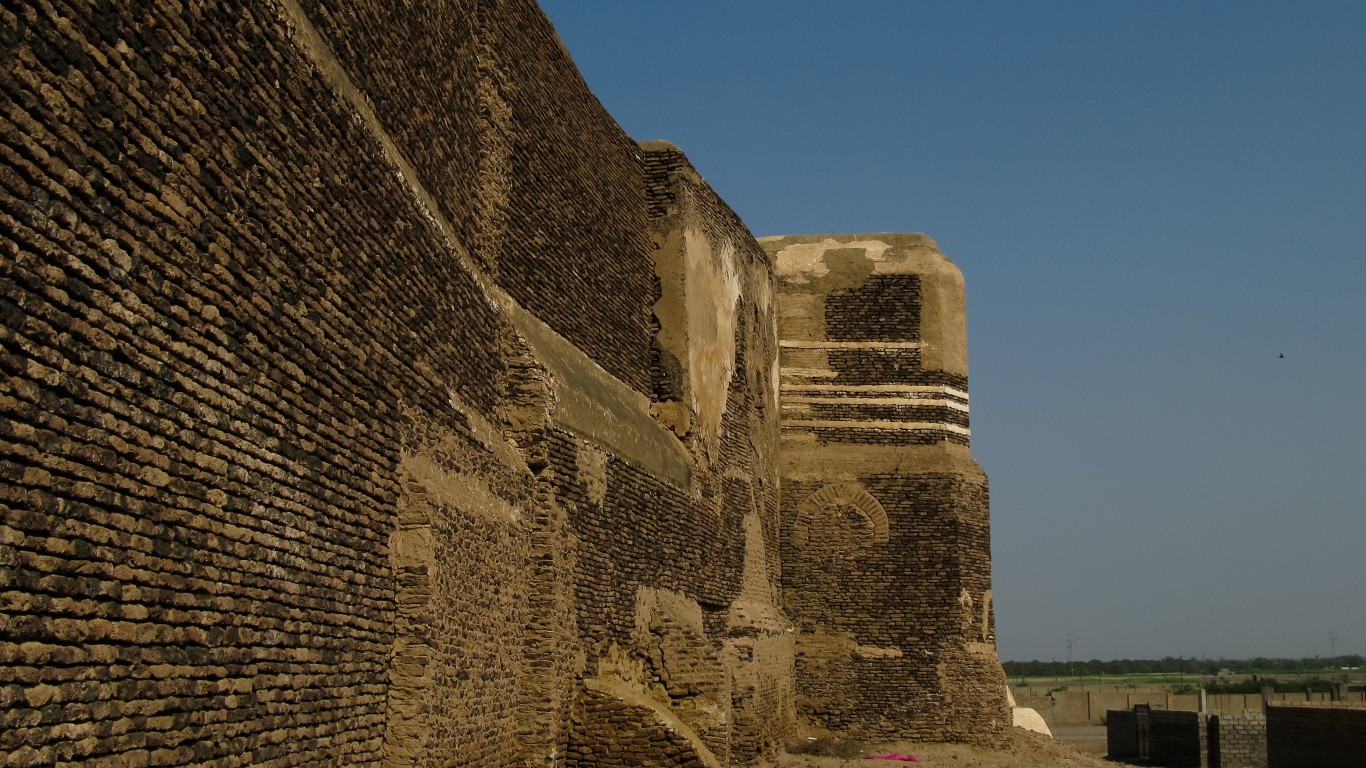
Historic Town of Zabid (2000)
> Location: Yemen
Zabid was the capital of Yemen from the 13th to the 15th century and was important in the Muslim world because of its Islamic university. Zabid has 86 mosques, more than any other city in Yemen. The city is closely connected to the spread of Islam in the early years of the religion. Although the city is protected by an antiquities law, a master plan to oversee the historic area is still under consideration.
Abu Mena (2001)
> Location: Egypt
Abu Mena is the site of an early Christian city and monastery in Egypt, southwest of Alexandria, built over the tomb of the martyr Menas of Alexander, who died in the third century. The destruction of cisterns around the city has led to the opening of underground gaps. The higher risk has forced authorities to close endangered buildings, including the crypt of Abu Mena. The local Supreme Council of Antiquities has responded by digging trenches and enlarging the protected area.
[in-text-ad]
Minaret and Archaeological Remains of Jam (2002)
> Location: Afghanistan
Rising to about 213 feet, the Minaret of Jam dates to about the 12th century. It is noted for its intricate brickwork and distinctive blue-tile inscription. According to UNESCO, the innovative structure “played a significant role in the development of the arts and architecture of the Indian sub-continent and beyond.” The threat to it comes from nature. Proposals are afoot to shield it from erosion of the riverbanks adjacent to it.
Cultural Landscape and Archaeological Remains of the Bamiyan Valley (2003)
> Location: Afghanistan
UNESCO calls the region “the most monumental expression of the western Buddhism.” The site bore witness to the destruction of two massive Buddha statues by the Taliban in 2001. The region contains Buddhist monasteries and sanctuaries, as well as fortified redoubts from the Islamic era. The religious and artistic features date from the first century. There are concerns for the region since the Taliban has regained control of Afghanistan.
Ashur (Qal’at Sherqat) (2003)
> Location: Iraq
The ancient city Ashur (Qal’at Sherqat), on the banks of the Tigris River, dates from 3000 B.C. It was the first capital of the Assyrian empire, where its kings were crowned, and it was the religious center of the empire before the Babylonians destroyed it. The threats today are deliberate destruction of heritage, flooding, and the lack of conservation and management plan.
[in-text-ad-2]
Coro and its Port (2005)
> Location: Venezuela (Bolivarian Republic of)
Coro is one of the few cities that can boast a combination of Spanish and Dutch architectural techniques. The city has been able to maintain its layout from its 16th-century origins. Founded in 1527, it has more than 600 historic buildings and is one of the earliest examples of Spanish colonization. An usual amount of rainfall in 2005 damaged Coro and the city was placed on the List of World Heritage in Danger. Venezuelan authorities are coordinating actions to mitigate the damage to Coro.
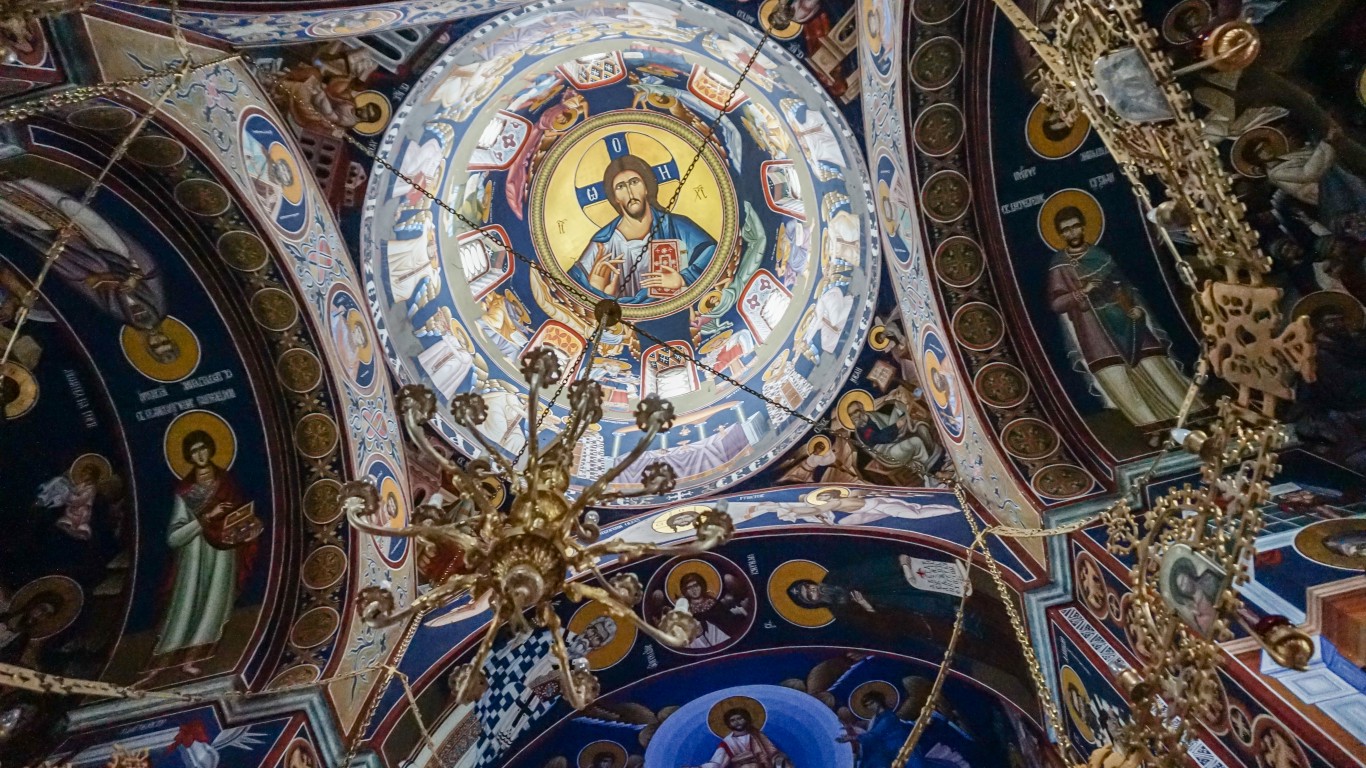
Medieval Monuments in Kosovo (2006)
> Location: Serbia
Superb examples of Byzantine-Romanesque ecclesiastical culture, with its elegant frescoes, can be found in four churches dating from the 14th century in Kosovo. The churches were placed on the List of World Heritage in Danger in 2004 because of mismanagement of the properties and political instability.
[in-text-ad]
Samarra Archaeological City (2007)
> Location: Iraq
Samarra Archaeological City dates from the ninth century. It once ruled the Abbasid Caliphate, which extended from present-day Tunisia to Central Asia. Located on both sides of the Tigris River, it is about 90 miles north of Baghdad. Samarra retains the best-preserved plan of an ancient, large city. Armed conflict has taken its toll on the site, and the property needs better management and conservation.
Niokolo-Koba National Park (2007)
> Location: Senegal
Niokolo-Koba National Park, with 2.2 million acres, is in the western African nation of Senegal. The forest and savannas are home to Derby elands (antelopes), chimpanzees, lions, leopards, and elephants. Poaching is an ongoing problem, and a proposal to put dams on the Gambia River might hurt the ecological integrity of the park.
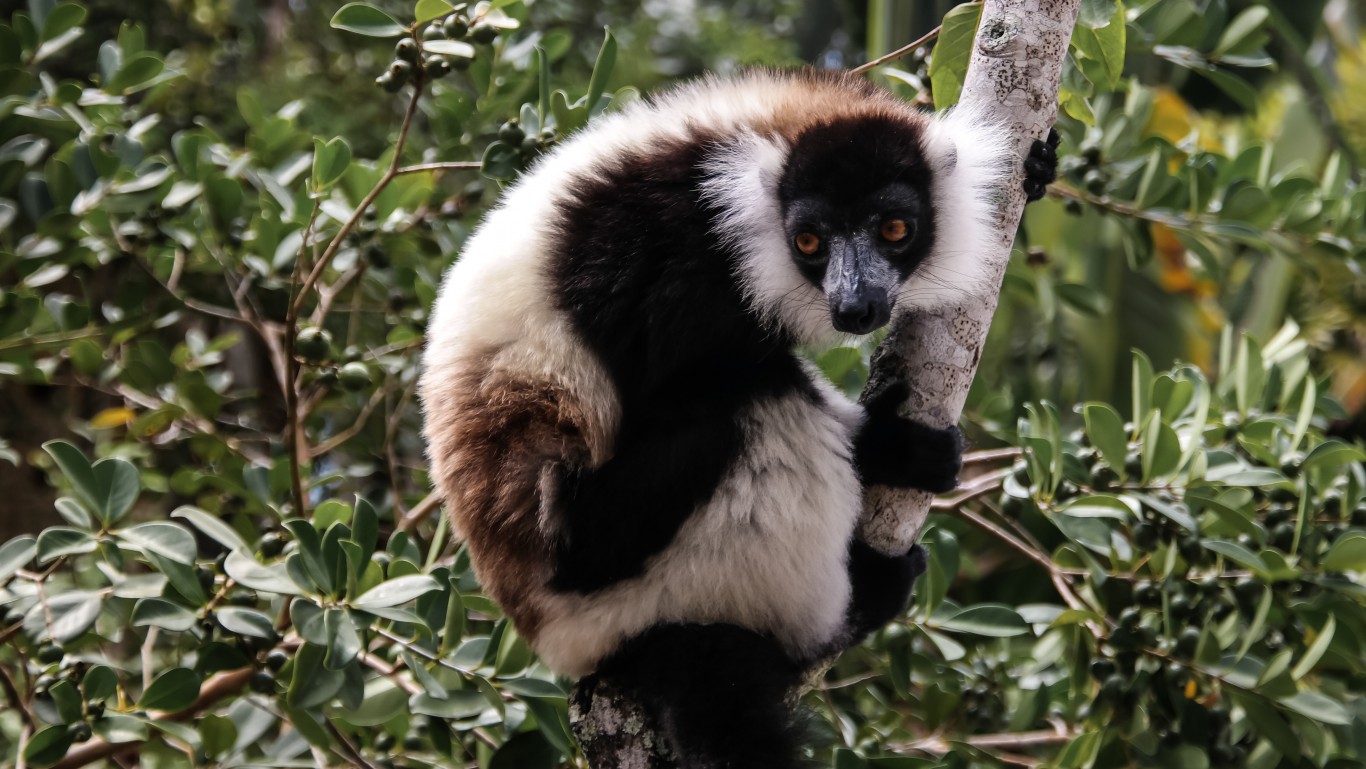
Rainforests of the Atsinanana (2010)
> Location: Madagascar
There are six national parks in the Rainforests of the Atsinanana, on the eastern part of the island nation of Madagascar. The rainforests are known for their unique biodiversity, including rare primates and lemurs. Those animals are under threat. The rainforests take on greater importance because deforestation of the eastern part of the island has reduced the amount of original forest to just 8.5%. Concern also centers around managing agricultural encroachment and reducing exploitation of resources such as forests and gem mining.
[in-text-ad-2]
Tombs of Buganda Kings at Kasubi (2010)
> Location: Uganda
On a hillside in Kampala are the Tombs of Buganda Kings at Kasubi, where a royal burial ground was established in the late 19th century. The main building, constructed with vegetal materials, housed four royal tombs. It was destroyed in a fire, and although the structure was rebuilt, it remains vulnerable to fire.
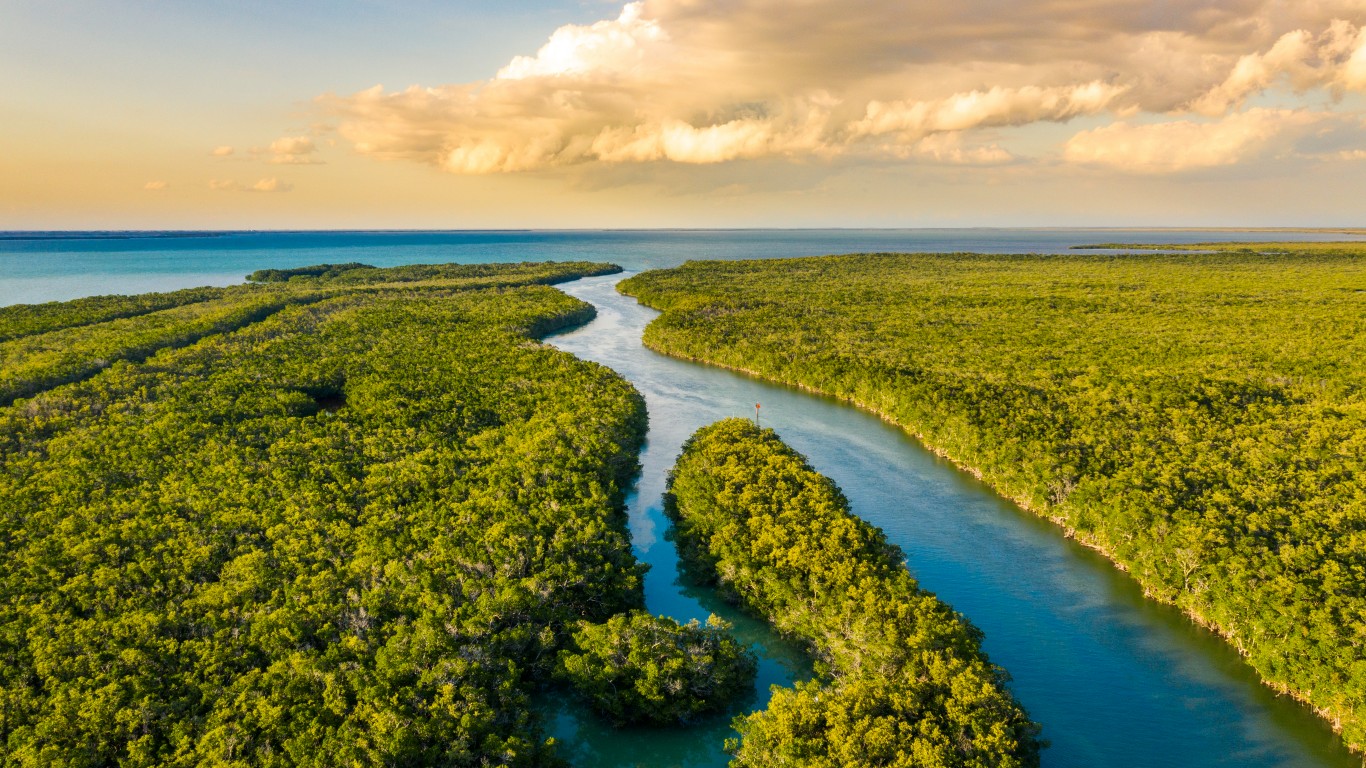
Everglades National Park (2010)
> Location: United States of America
Located where temperate and subtropical America meet, the Everglades is the largest designated subtropical wilderness reserve on the North American continent. It contains the biggest mangrove ecosystem in the Western Hemisphere. Birds feed on its seemingly endless stands of sawgrass. Water management and increased salinity in Florida Bay are the biggest threats to the Everglades. A more recent concern is the invasion of the Burmese python, which has depopulated deer, waterfowl, alligators, rabbits, and other species.
[in-text-ad]
Río Plátano Biosphere Reserve (2011)
> Location: Honduras
The Río Plátano Biosphere Reserve is the largest protected area in Honduras. It is significant in that it is one of the last vestiges of a Central American rainforest. Among 721 species of vertebrates there are the vulnerable or endangered Mexican spider monkey, tapir, giant anteater, and west Indian manatee. It also is home to 2,000 indigenous people. Though conservation efforts began as far back as 1960, the reserve is threatened by agricultural encroachment and illegal removal of resources.
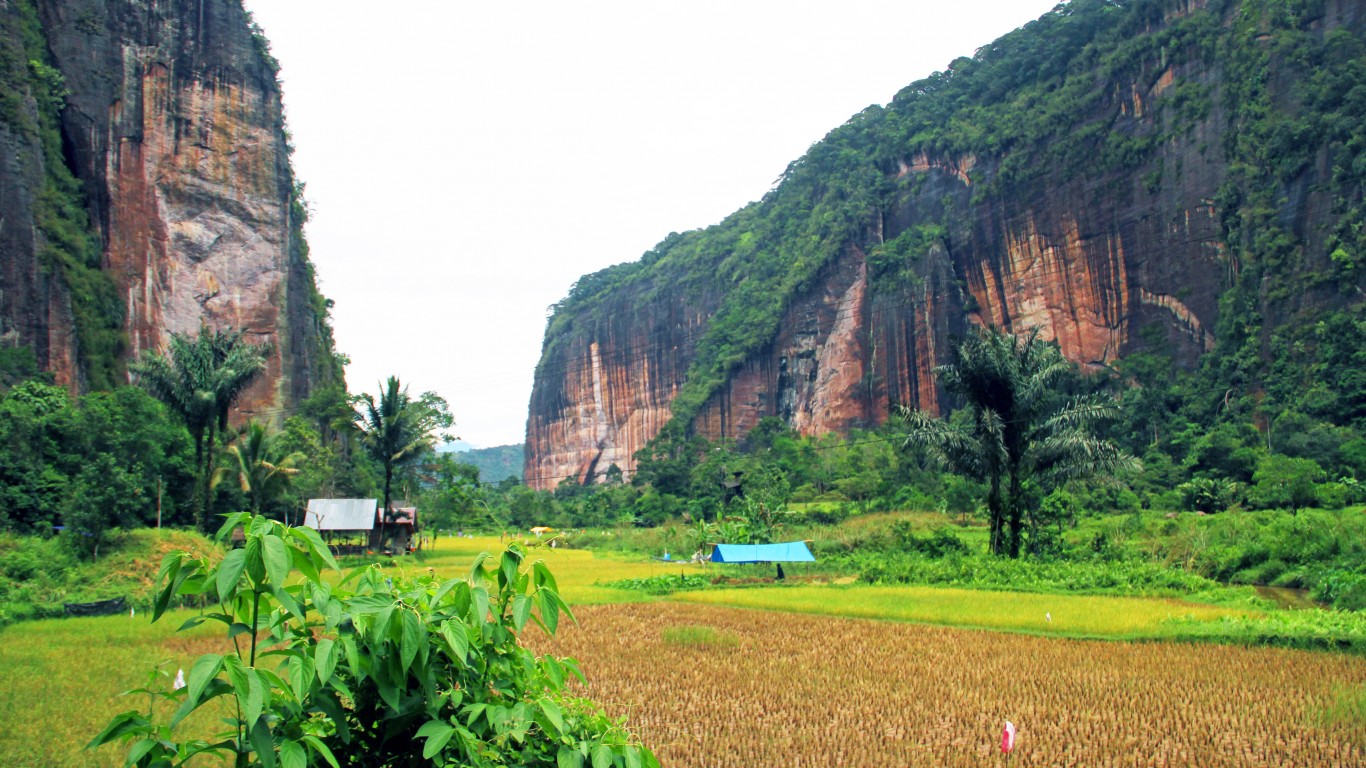
Tropical Rainforest Heritage of Sumatra (2011)
> Location: Indonesia
The Tropical Rainforest Heritage of Sumatra, which sits on about 6.2 million acres, comprises three national parks that are home to 22 mammal species only found in the archipelago, among them the Sumatran orangutan. Other species in the rainforest are the Sumatran tiger and Malayan sun-bear. The property is threatened by road development, poaching, and expansion of agriculture.
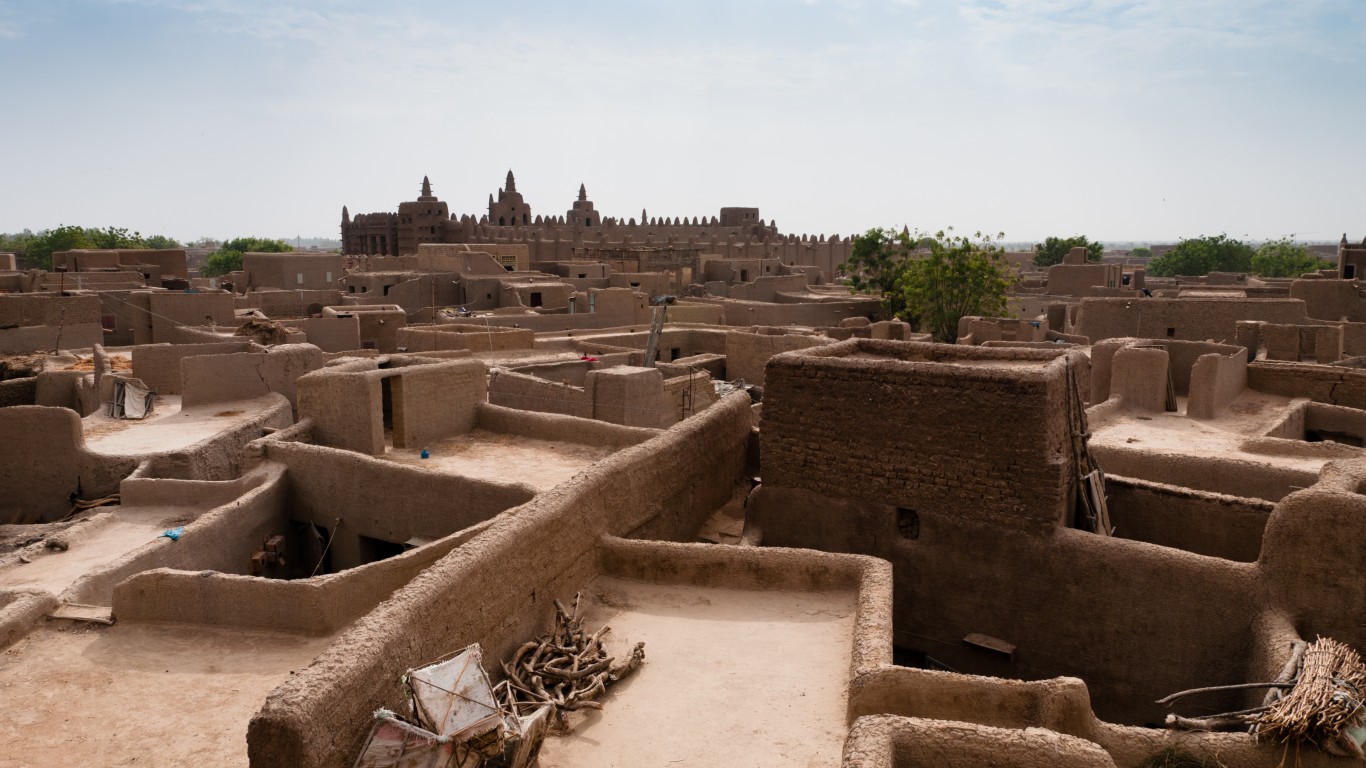
Timbuktu (2012)
> Location: Mali
Timbuktu was one of the great Islamic intellectual centers in the 15th and 16th centuries. It is known for its three famous mosques — Djingareyber, Sankore, and Sidi Yahia — which played an important role in the spread of Islam. Timbuktu is threatened with the advance of the Sahara Desert as well as increased urbanization.
[in-text-ad-2]
Tomb of Askia (2012)
> Location: Mali
Looming like a giant porcupine, the pyramidal Tomb of Askia in the town of Gao is a massive mud-built structure constructed by Askia Mohamed, the emperor of Songhai, in the late 15th century. Local authorities are working to improve the integrity of the surrounding wall and protect the site’s authenticity.
Fortifications on the Caribbean Side of Panama: Portobelo-San Lorenzo (2012)
> Location: Panama
Vestiges of the Spanish Empire in the Western Hemisphere can be seen in the Fortifications on the Caribbean Side of Panama: Portobelo-San Lorenzo, built in the 17th and 18th centuries. The defense works were built to protect Spain’s transatlantic trade. Various environmental factors and unchecked urban expansion are the modern threats to the old fortifications.
[in-text-ad]
East Rennell (2013)
> Location: Solomon Islands
East Rennell is the bottom third of Rennell Island, the southernmost of the Solomon Islands. Rennell features dense forests and is the largest raised coral atoll in the world. On the island is Lake Tegano, the biggest insular lake in the Pacific, teeming with species endemic to the lake and containing smaller islands composed of limestone. Rising water levels and increased salinity in Lake Tegano because of climate change are impacting the environment, reducing the growth of taro and coconut, which help sustain the local populace.
Ancient City of Aleppo (2013)
> Location: Syrian Arab Republic
Beginning in the second millennium B.C., Aleppo was an important city along trade routes in the Middle East. Among the civilizations holding sway over the city were the Hittites, Assyrians, Arabs, Mongols, and Ottomans. Among its features are the citadel, Great Mosque, and madrasas. The Ancient City of Aleppo is one of six Syrian sites added to the List of World Heritage in Danger in 2013.
Syria has been embroiled in an armed conflict since 2011, with the Islamic State destroying many heritage sites. UNESCO assessed the damage in 2018, showing that more than 10% of the historic buildings have been destroyed and more than half severely to moderately damaged.
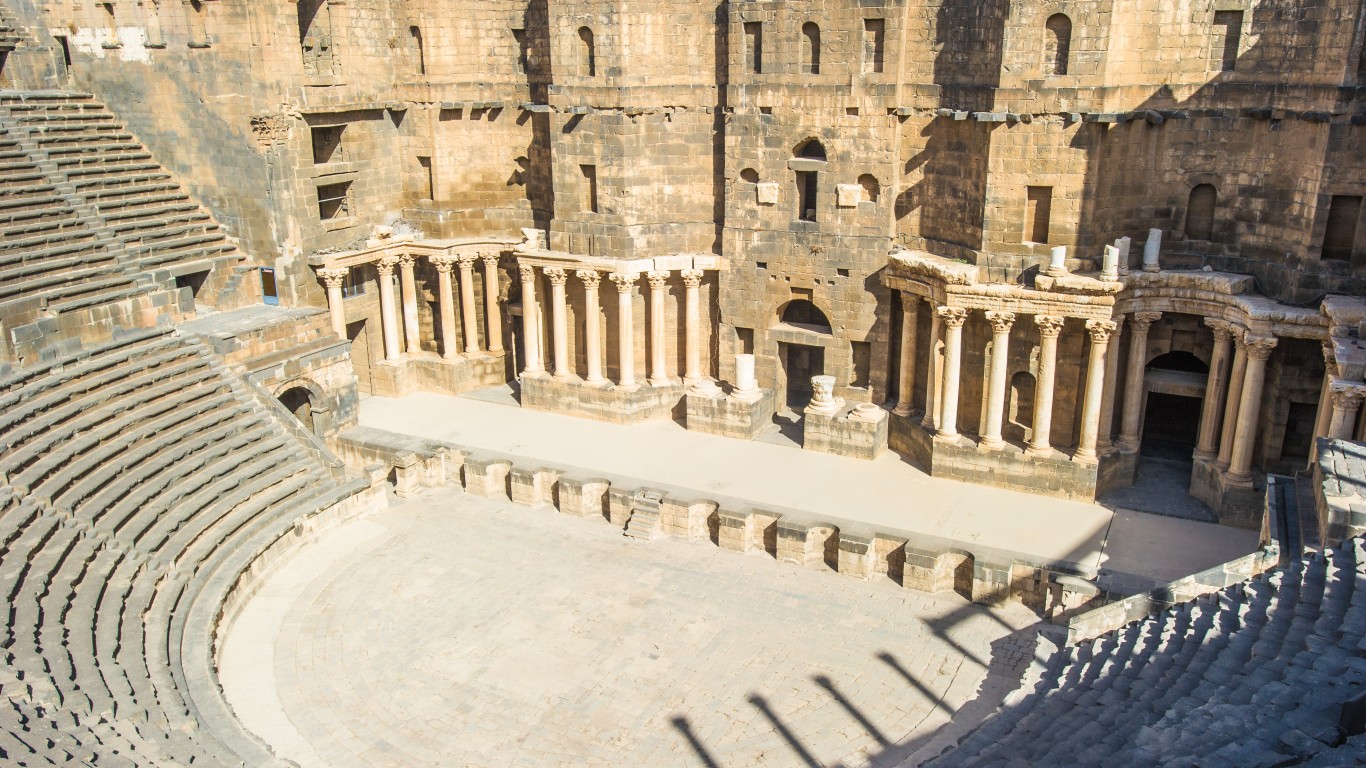
Ancient City of Bosra (2013)
> Location: Syrian Arab Republic
Bosra was the capital of Arabia in Roman times and was a key point along the trade route to Mecca. It is known for a second century Roman theater, an early Christian cathedral, and mosques. It is believed that the prophet Mohammed visited there twice. The old section of Bosra is being depopulated and turned into an open-air museum. UNESCO is concerned that there is no management plan overseeing the site and there is a lack of skilled labor to maintain it.
[in-text-ad-2]
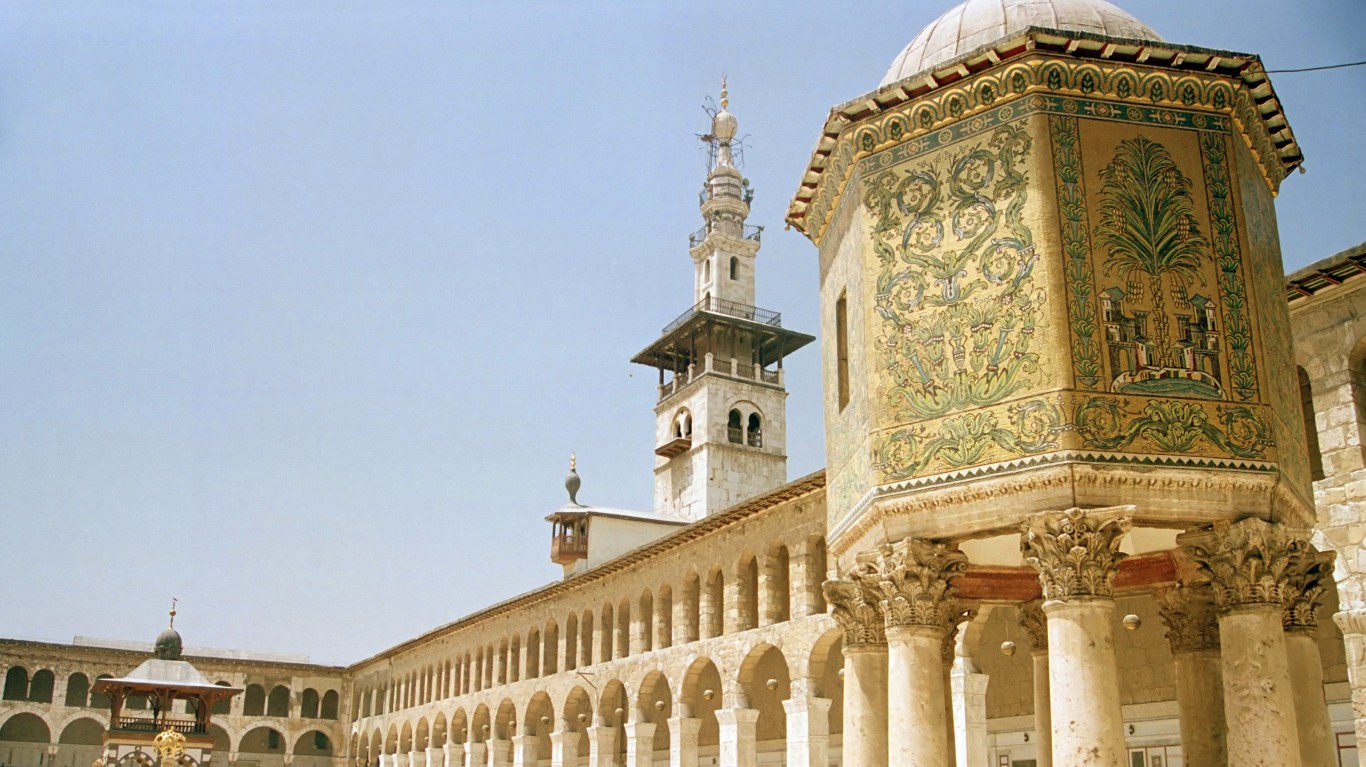
Ancient City of Damascus (2013)
> Location: Syrian Arab Republic
Founded about 5,000 years ago, Damascus is one of the oldest cities in the world. Among its more notable monuments is the Great Mosque of the Umayyads from the eighth century — one of the largest in the world. It was a center of trades and crafts during Medieval times. Lack of conservation planning and ongoing erosion threaten the sites’s integrity.
Ancient Villages of Northern Syria (2013)
> Location: Syrian Arab Republic
There are 40 villages represented in this area of Northern Syria, dating from the first century and abandoned from the eighth to the 10th centuries. The villages are significant in that they show evidence of the transition of the pagan era to the Christianity. They offer detail in everyday life, with remains of street grids, temples, churches, bathhouses and dwellings. Concerns about the sites center around recent rural relocation that could negatively impact the sites.
[in-text-ad]
Crac des Chevaliers and Qal’at Salah El-Din (2013)
> Location: Syrian Arab Republic
One of the best examples of castles constructed during the time of the Crusades is Crac des Chevaliers and Qal’at Salah El-Din, built in the 12th and 13th centuries. The castles represent a significant advancement in fortification design. There is concern about protecting the eastern slope of the site because of urban expansion. UNESCO believes the site needs a unified management plan.
Site of Palmyra (2013)
> Location: Syrian Arab Republic
Palmyra, located in the Syrian desert, is the site of the remains of an important cultural center from the ancient Middle East. Palmyra was an important stopover along the trade route to Persia and the Far East. The colonnaded ruins are evidence of Greco-Roman architectural skills as well as Persian influence. Palmyra is under threat from earthquakes and inadequate conservation efforts. Its fame is a double-edged sword because increased tourist visits have threatened its integrity.
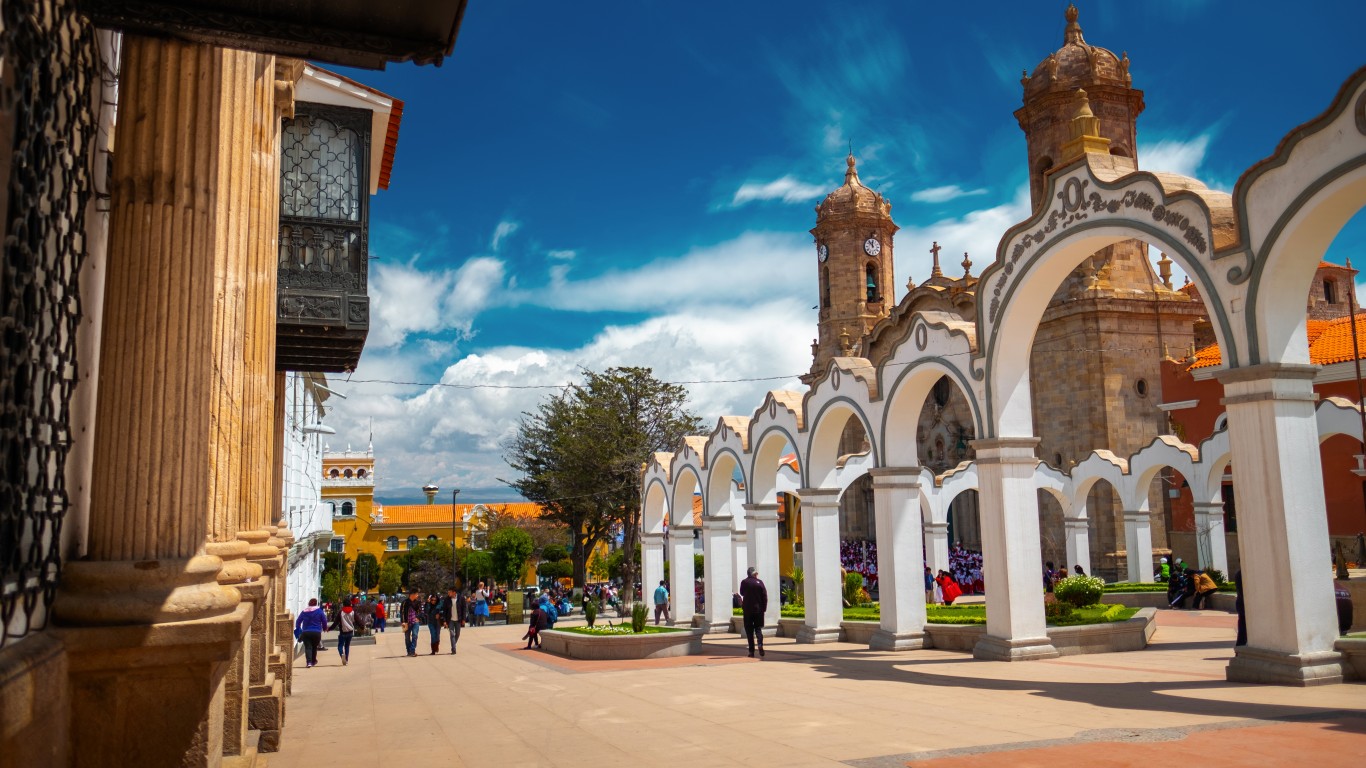
City of Potosí (2014)
> Location: Bolivia (Plurinational State of)
The city of Potosí high in the Bolivian Andes and is considered a superb example of a 16th-century silver-mining complex, reputedly the biggest industrial complex in the world at that time. Development in the region included construction of monastic churches and an architectural style called “Andean Baroque.” The silver lode helped bankroll the Spanish Empire. Decades of mining have led to degradation of the landscape, leaving the mountain porous and unstable.
[in-text-ad-2]
Palestine: Land of Olives and Vines – Cultural Landscape of Southern Jerusalem, Battir (2014)
> Location: Palestine
Located just southwest of Jerusalem, this site is an example of the development of terraced farming fed by underground water sources through irrigation channels. Though protected by Palestinian laws, UNESCO is concerned that construction of a separation barrier would alter the terrace landscape and the irrigation system.
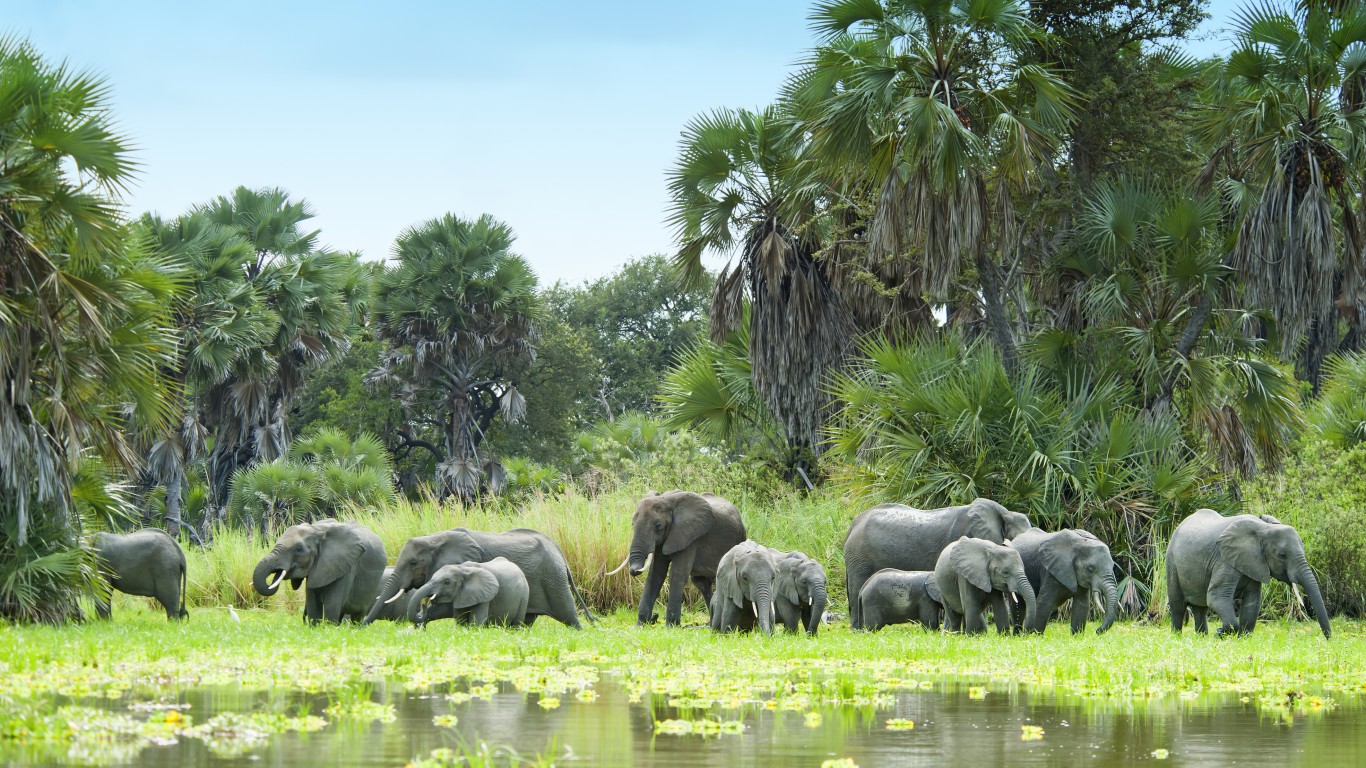
Selous Game Reserve (2014)
> Location: United Republic of Tanzania
At 50,000 square kilometers, the Selous Game Reserve in Tanzania is one of the largest protected areas in Africa. It’s home to — among many other species — elephants, black rhinoceros, cheetah, and giraffe. Its integrity is enhanced by the presence of legal protections and management oversight. However, poaching is an ongoing concern, and UNESCO believes the reserve needs to improve ecological monitoring.
[in-text-ad]

Hatra (2015)
> Location: Iraq
The ancient city of Hatra in Iraq, defended by high, thick walls and buttressed by towers, fended off invasions from Rome in the second century. Hellenistic and Roman temples combined with Eastern cultural influences are examples of its architectural splendor. In modern times, the city has been wracked by armed conflict. It was inscribed on the List of World Heritage in Danger in 2015.
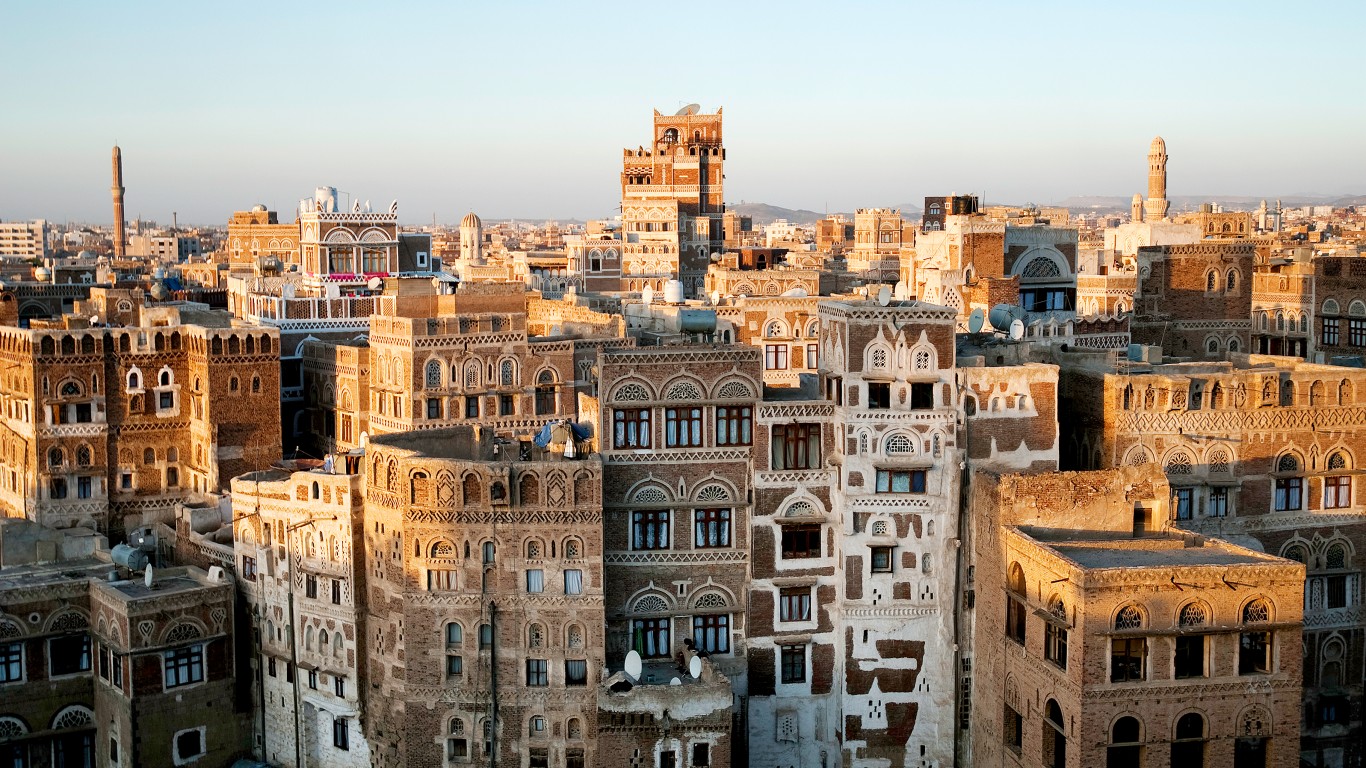
Old City of Sana’a (2015)
> Location: Yemen
The Old City of Sana’a in Yemen, located in a valley, is known for the number of its distinct burnt-red brick towers, adorned with geometric shapes and white gypsum. Verdant gardens, known as bustans, can be found in the old city, which has been inhabited for 2,500 years. The houses of the old city are under threat from urban development and the disappearance of the gardens.

Old Walled City of Shibam (2015)
> Location: Yemen
The Old Walled City of Shibam, the third site from Yemen on the list, looms out of a valley and suggests more of a modern urban center than a 16th-century city. It is surrounded by a wall and is considered to be an early example of vertical urban planning. Shibam was a stopover for caravans bearing incense and spices. The biggest threat to Shibam is flooding, which devastated the city in 2008.
[in-text-ad-2]
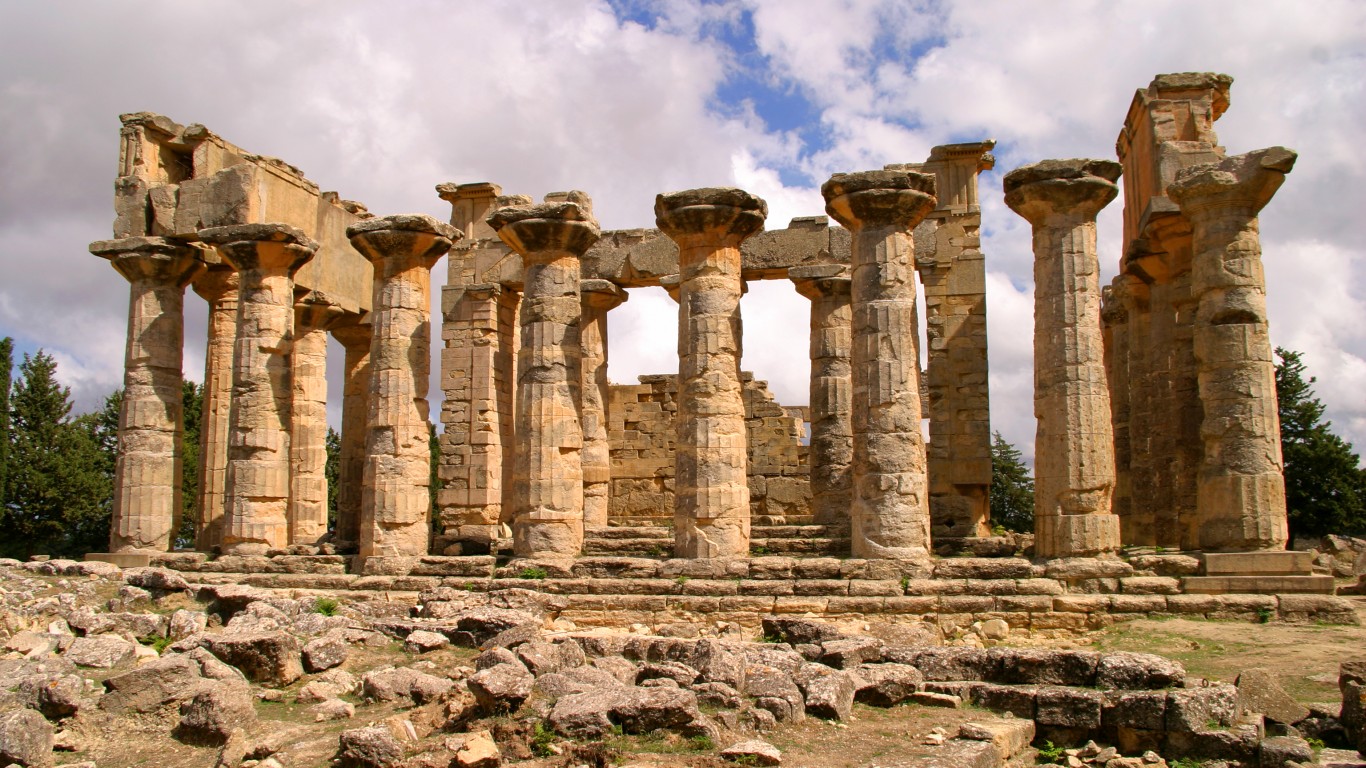
Archaeological Site of Cyrene (2016)
> Location: Libya
Ancient Greeks crossed the Mediterranean to found Cyrene, an important city in Hellenic times, before an earthquake devastated it. The site is one of five in Libya on the List of World Heritage in Danger because of political instability and armed conflict. Libya has been unstable since a revolt in 2011 that ousted strongman Muammar Gaddafi.

Archaeological Site of Leptis Magna (2016)
> Location: Libya
Leptis Magna was one of the most beautiful cities in ancient Rome, featuring soaring public monuments, residential neighborhoods, marketplaces, and shops. Roman emperor Septimius Severus was born here and expanded the city. The site is one of five in Libya on the List of World Heritage in Danger because of political instability and armed conflict.
[in-text-ad]

Archaeological Site of Sabratha (2016)
> Location: Libya
Founded by the Phoenicians as a trading site, Sabratha was a conduit for goods made in the interior of Africa. It was eventually taken over by the Romans, who rebuilt it in the second and third centuries. The Archaeological Site of Sabratha is one of five locations in Libya on the List of World Heritage in Danger because of political instability and armed conflict.
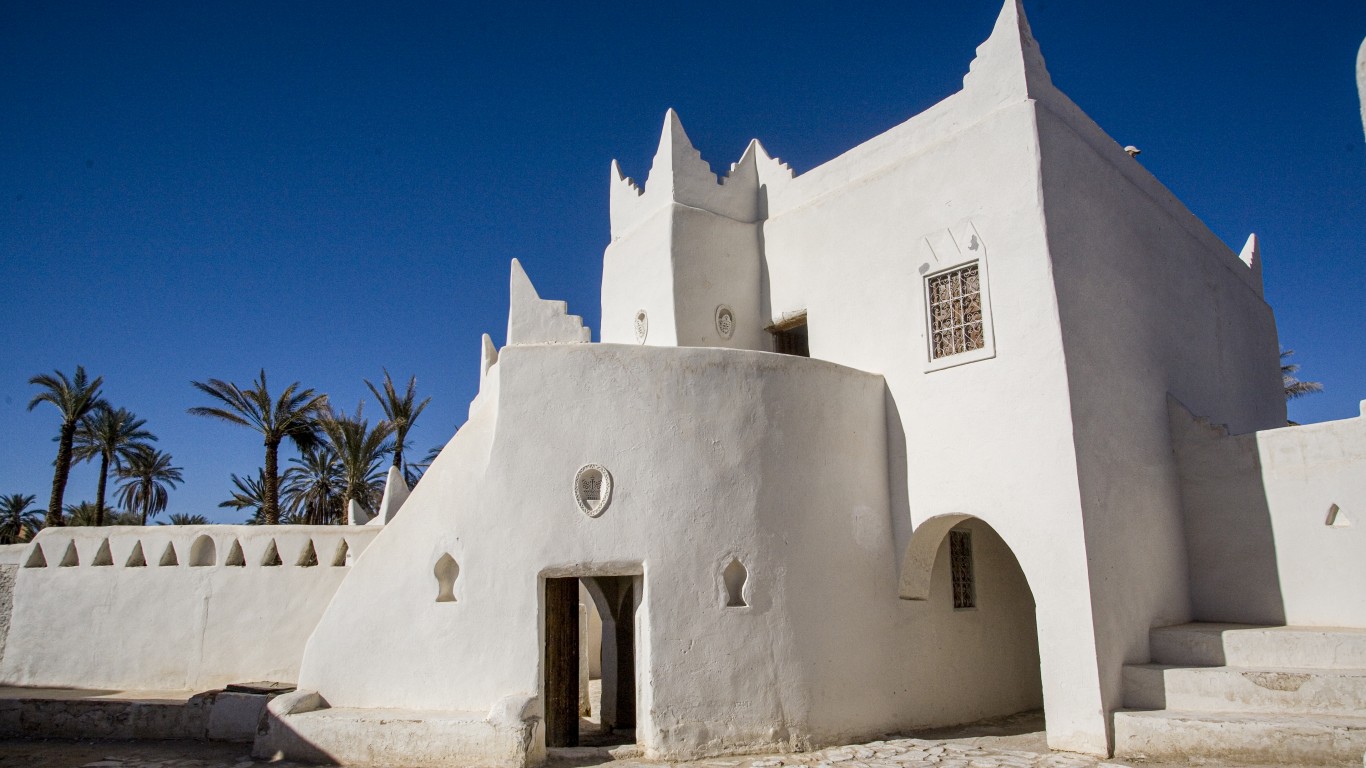
Old Town of Ghadamès (2016)
> Location: Libya
Ghadamès, an oasis town, is one of the oldest pre-Saharan cities and is an example of a traditional housing settlement. The bottom floor was where supplies were stored. The family lived on the next floor, with warrens of passageways. On the top were terraces. Because of political instability and armed conflict, Ghadamès is one of five locations in Libya on the List of World Heritage in Danger.
Rock-Art Sites of Tadrart Acacus (2016)
> Location: Libya
Rock-Art Sites of Tadrart Acacus is on the border with Algeria and contains cave paintings dating from 12000 B.C. to A.D. 100. Vandalism is an ongoing problem at the site, including graffiti. Efforts to protect it have also been set back by armed conflict and political instability. The site is one of five sites in Libya that are on the List of World Heritage in Danger.
[in-text-ad-2]
Old Towns of Djenné (2016)
> Location: Mali
Old Towns of Djenné comprises four archaeological sites. Djenné is one of the oldest towns in the sub-Saharan region, and its architecture is typical of Islamic influence. About 2,000 traditional houses survived. The region played a key role in trade routes and one of the centers for the spread of Islam in Africa. Erosion, gullying, and unrestrained urbanization threaten the integrity of the Old Towns of Djenné.
Nan Madol: Ceremonial Centre of Eastern Micronesia (2016)
> Location: Micronesia (Federated States of)
Nan Madol is a series of more than 100 small islands southeast of Pohnpei, the capital of the Federated States of Micronesia. These islets were constructed with basalt and coral boulders and contain what is left of stone palaces, tombs, and temples from a Pacific island dynasty that existed between 1200 and 1500 A.D. It is on the List of World Heritage in Danger because of waterway siltation and the growth of mangroves that undermines the integrity of the remaining structures.
[in-text-ad]
Historic Centre of Shakhrisyabz (2016)
> Location: Uzbekistan
The Historic Centre of Shakhrisyabz, located on the Silk Roads in southern Uzbekistan, is more than 2,000 years old. It was a vibrant cultural and political area in the 14th and 15th century, boasting public baths and bustling bazaars. Among the center’s noteworthy structures is the imposing Ak-Sarai Palace. The tomb of Temu, made of white marble, is one of the finest memorials in Central Asia. Rising ground water threatens the integrity of the center.

Historic Centre of Vienna (2017)
> Location: Austria
The historic center of the Austrian capital is home to Baroque castles, splendid gardens, and the Ringstrasse with its elegant buildings. Vienna is associated with some of the world’s greatest classical music. The city is under development and modernization pressures. To address these challenges, the city adopted what became known as the “Vienna Memorandum” to better manage historic urban landscapes, with planning focused on sustainable policies.
Hebron/Al-Khalil Old Town (2017)
> Location: Palestine
Hebron/Al-Khalil Old Town is located at the crossroads of caravan trade routes in the northern Arabian peninsula. The place became a site of pilgrimage for the three monotheistic religions: Judaism, Christianity, and Islam. Political instability and the need for a management plan are concerns regarding the integrity of Hebron/Al-Khalil Old Town.
[in-text-ad-2]
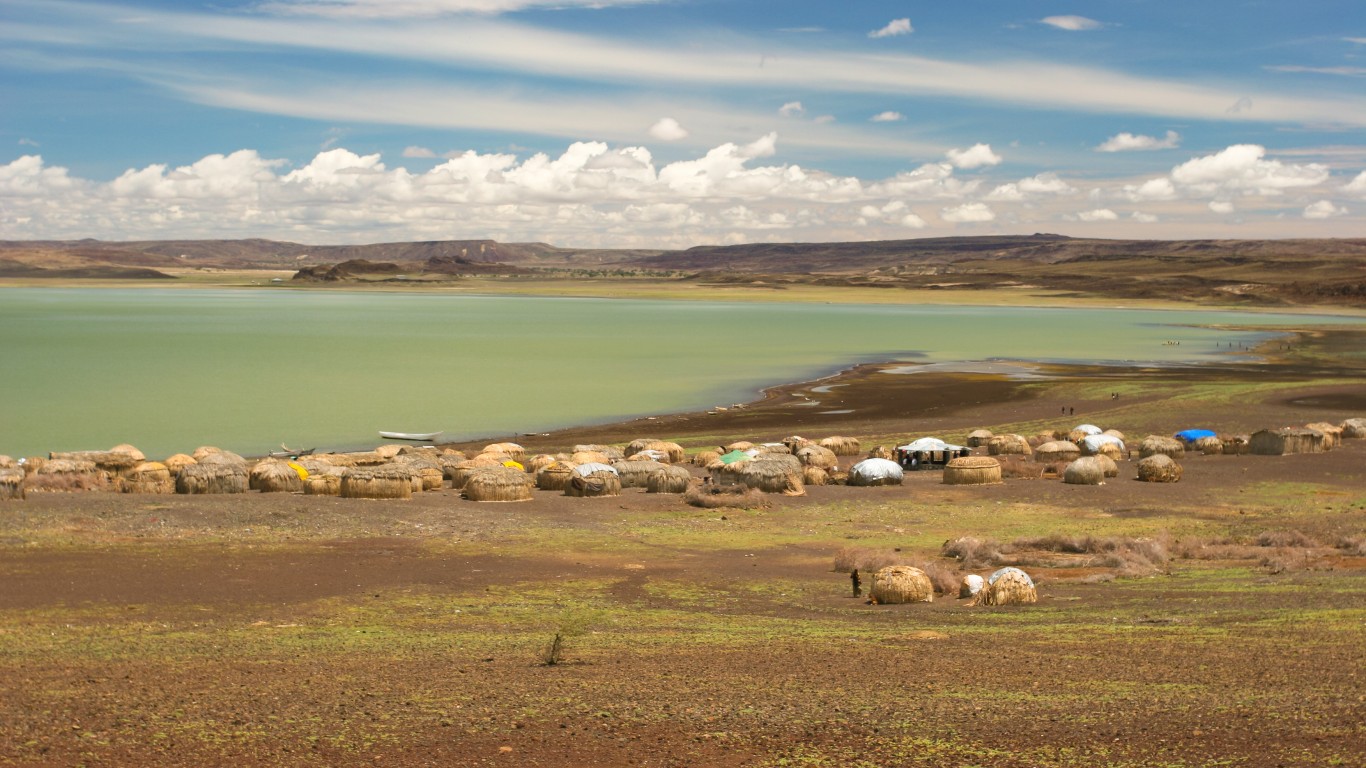
Lake Turkana National Parks (2018)
> Location: Kenya
Lake Turkana is actually three national parks. The area is home to the Nile crocodile, hippopotamus, and poisonous snakes. The number of fossils found in the parks has been crucial to scientific understanding of the prehistoric environment. Potential threats to the parks include severe droughts, livestock encroachment, poaching, and substandard infrastructure.
Islands and Protected Areas of the Gulf of California (2019)
> Location: Mexico
Comprising 244 islands, islets, and coastal areas, the Islands and Protected Areas of the Gulf of California are in the Gulf of California in northeastern Mexico. The area contains 39% of the world’s total number of species of marine mammals. There is no direct threat to the area. The concern stems from what occurs outside the protected areas, such as overfishing, increased tourism, and coastal development.
[in-text-ad]
Roșia Montană Mining Landscape (2021)
> Location: Romania
Located in the Apuseni Mountains in central Romania, Roșia Montană Mining Landscape is an extensive ancient Roman mining site. For 166 years beginning in the first century, the Roman Empire removed about 500 tons of gold from the site. Besides the mining area, the site also includes evidence of Roman necropolises, administrative buildings, and dwellings. UNESCO believes a plan is needed to restrict mining permits to preserve the site’s integrity.
Thank you for reading! Have some feedback for us?
Contact the 24/7 Wall St. editorial team.

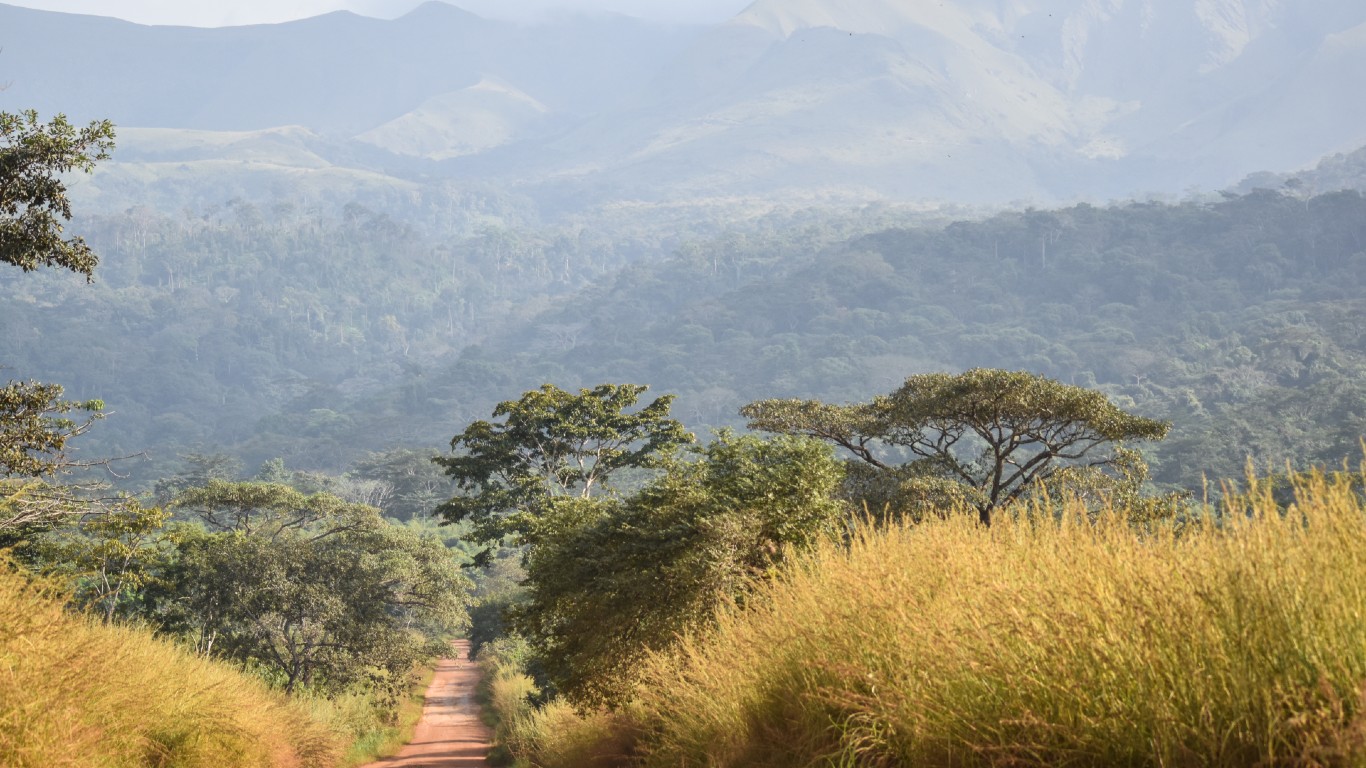
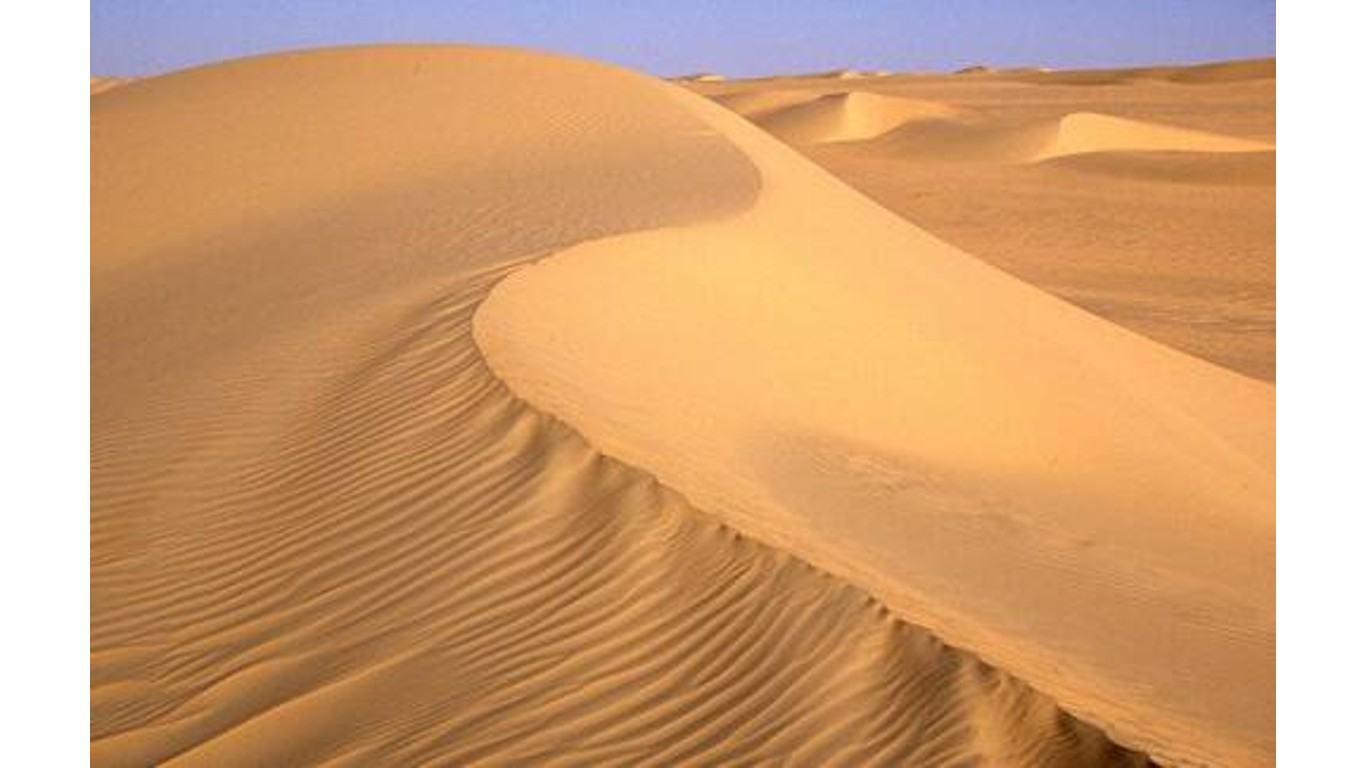
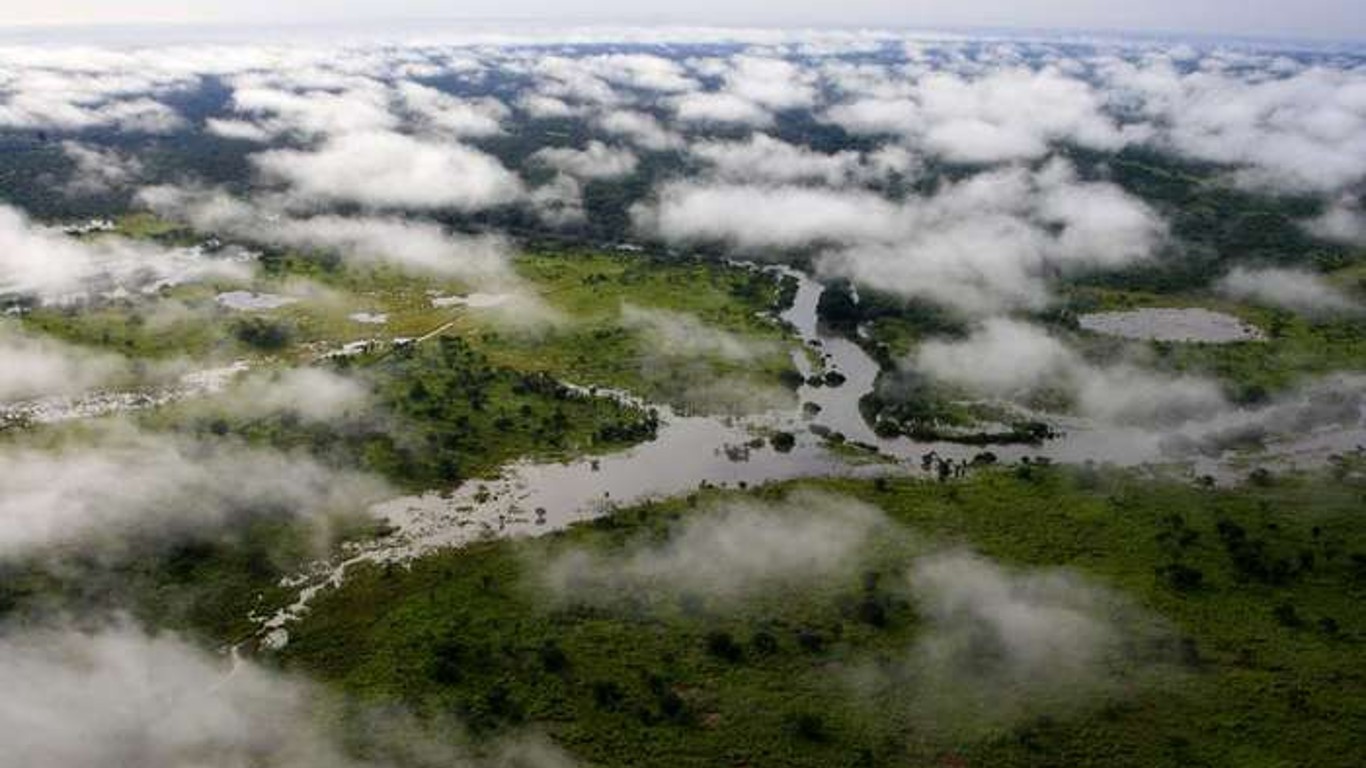
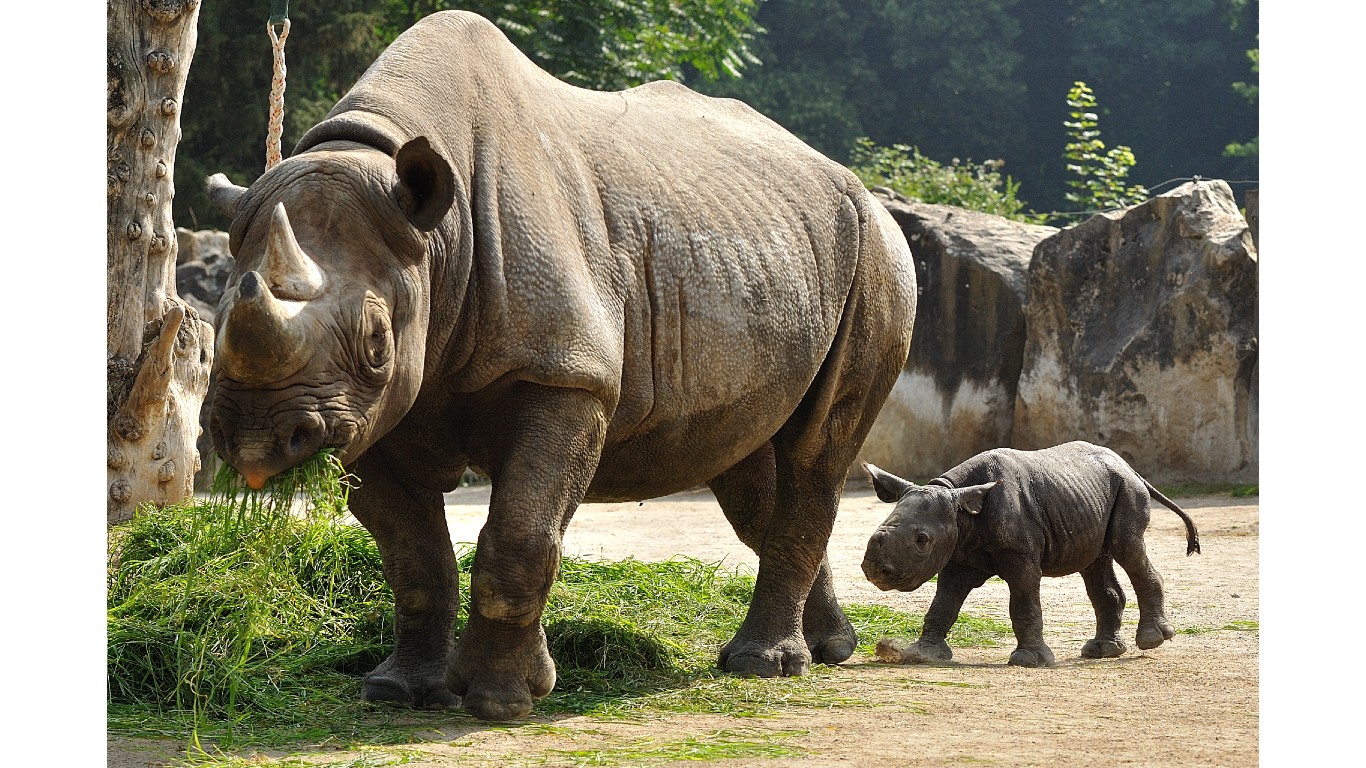
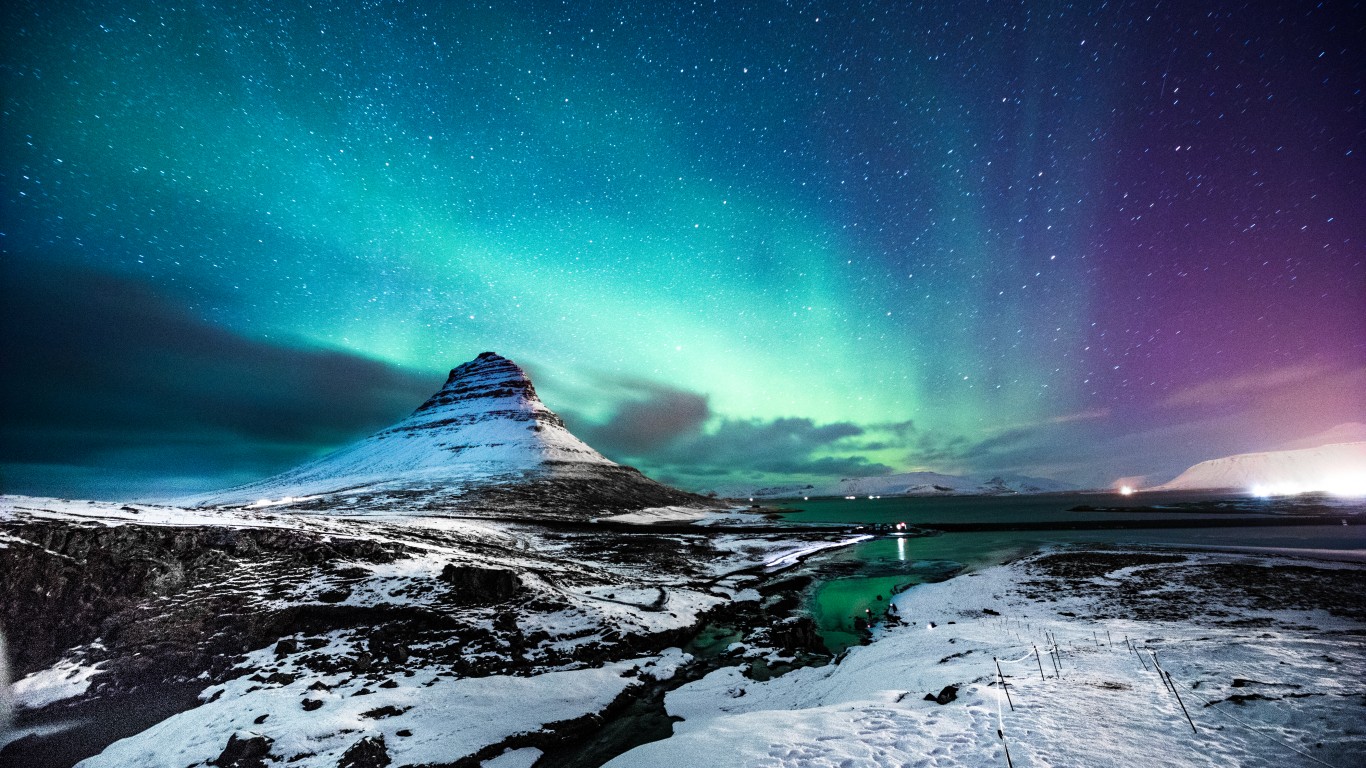 24/7 Wall St.
24/7 Wall St.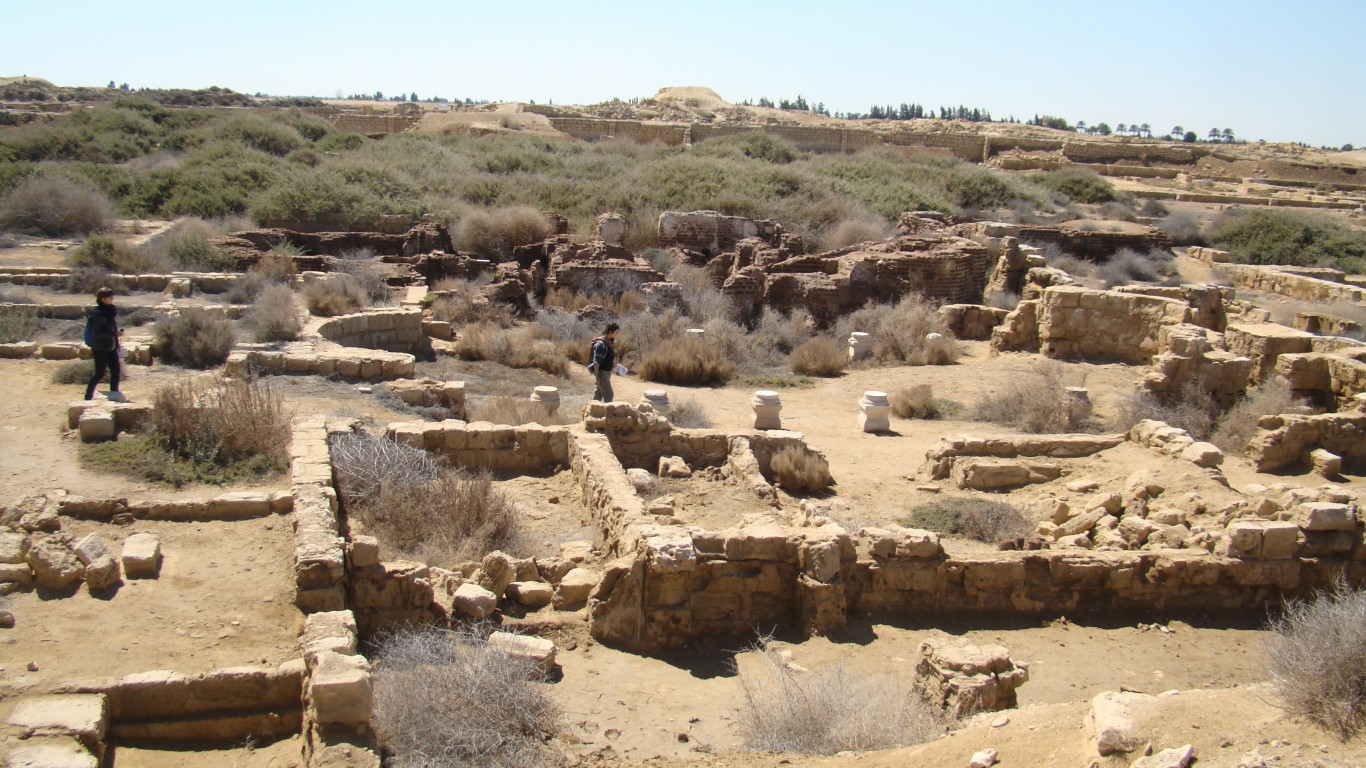
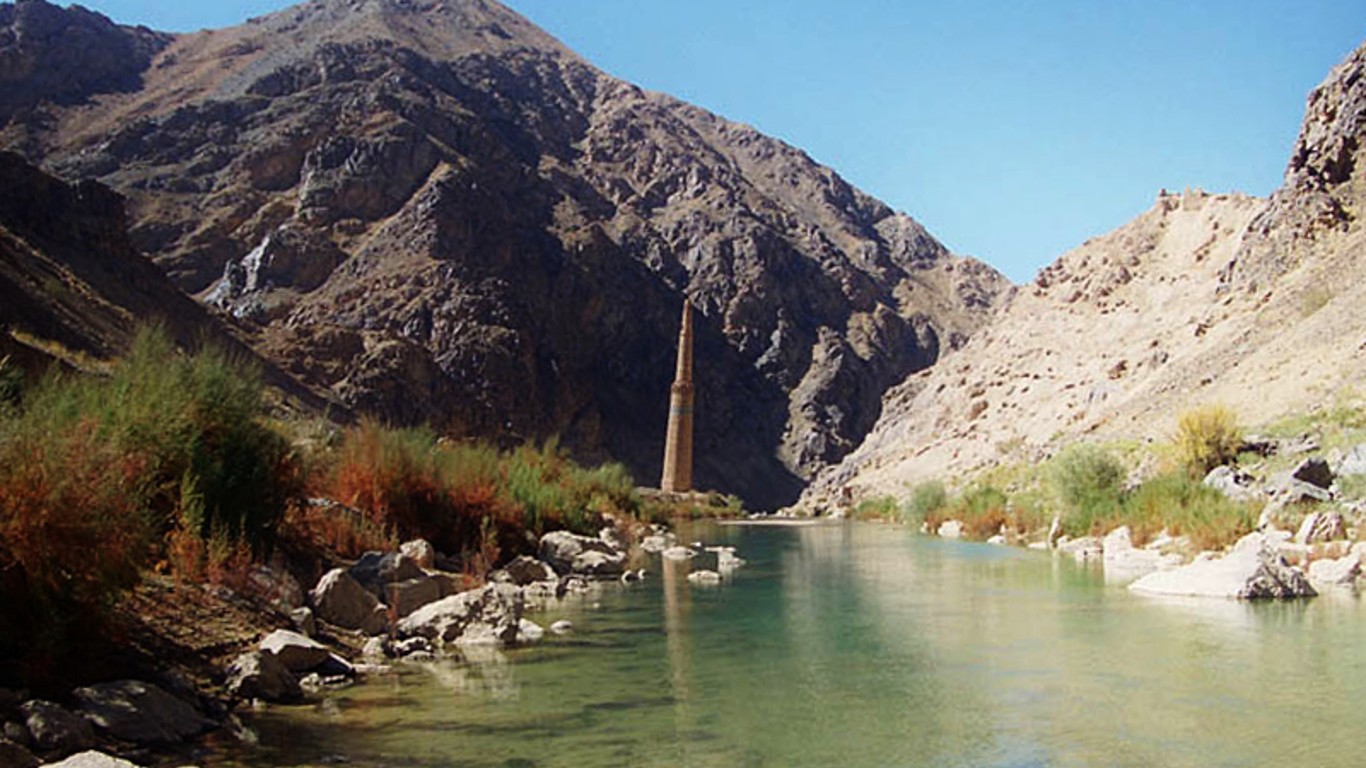
 24/7 Wall St.
24/7 Wall St.
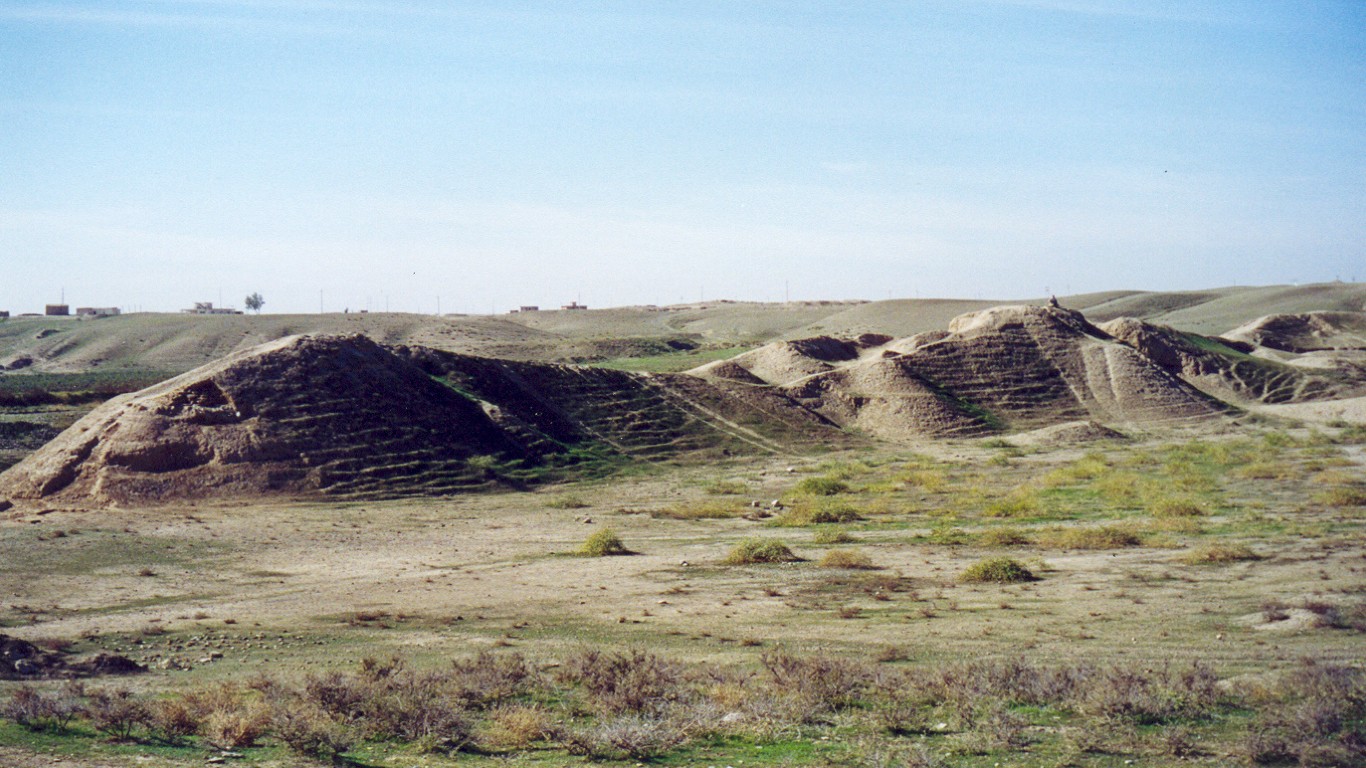

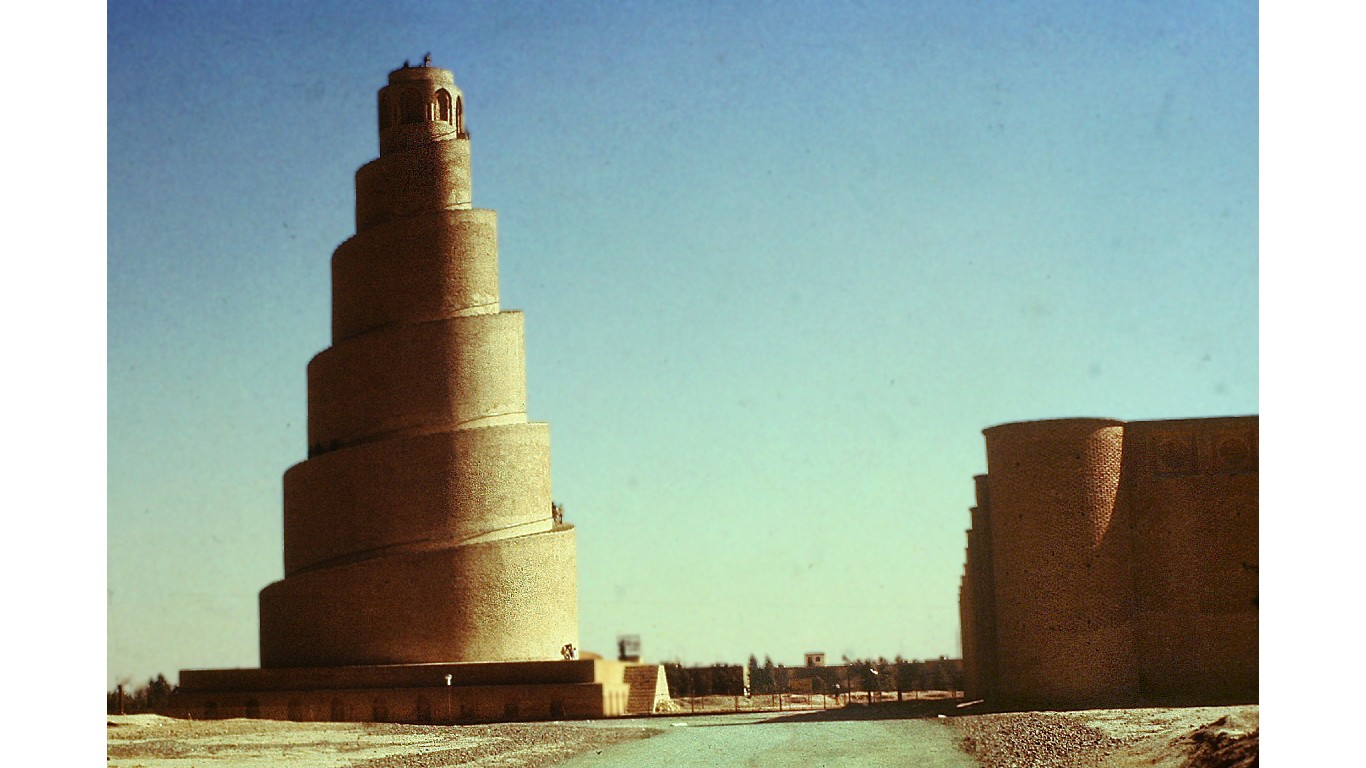
 24/7 Wall St.
24/7 Wall St.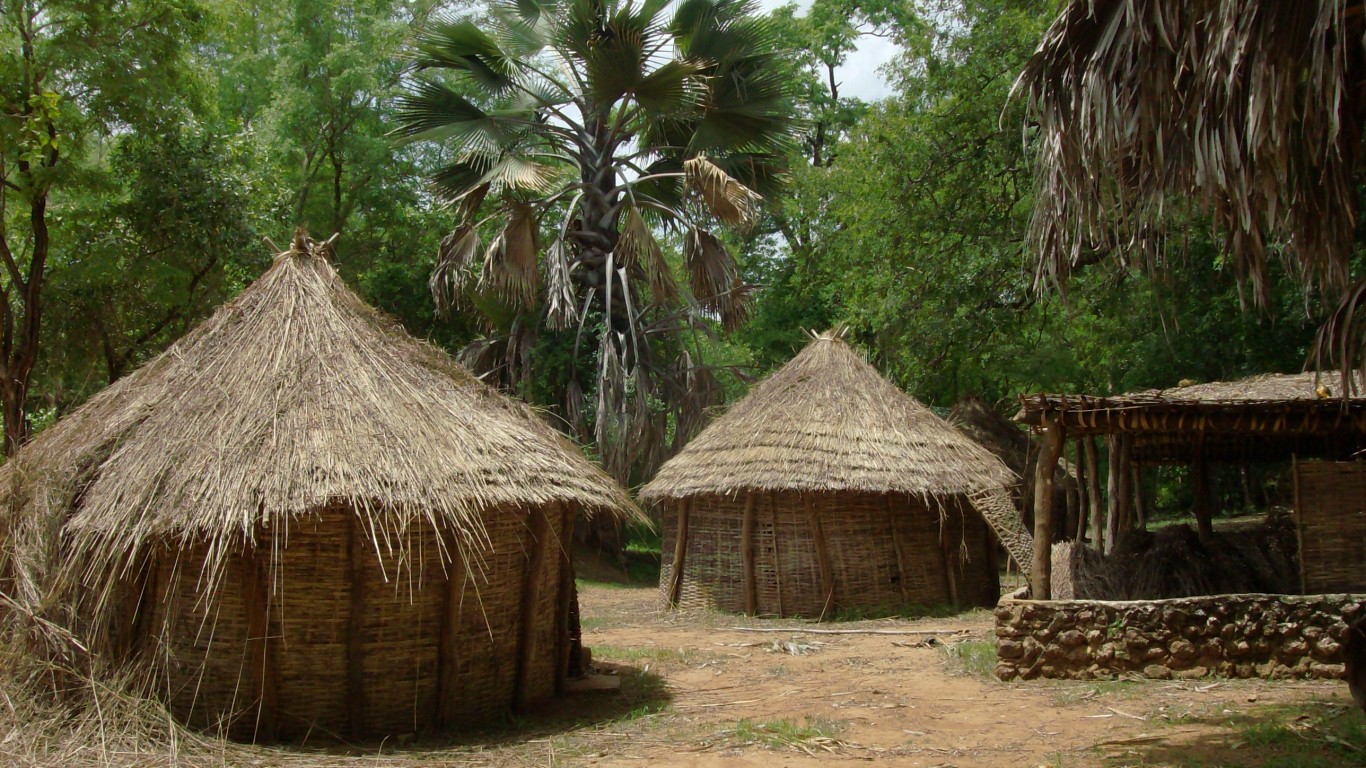


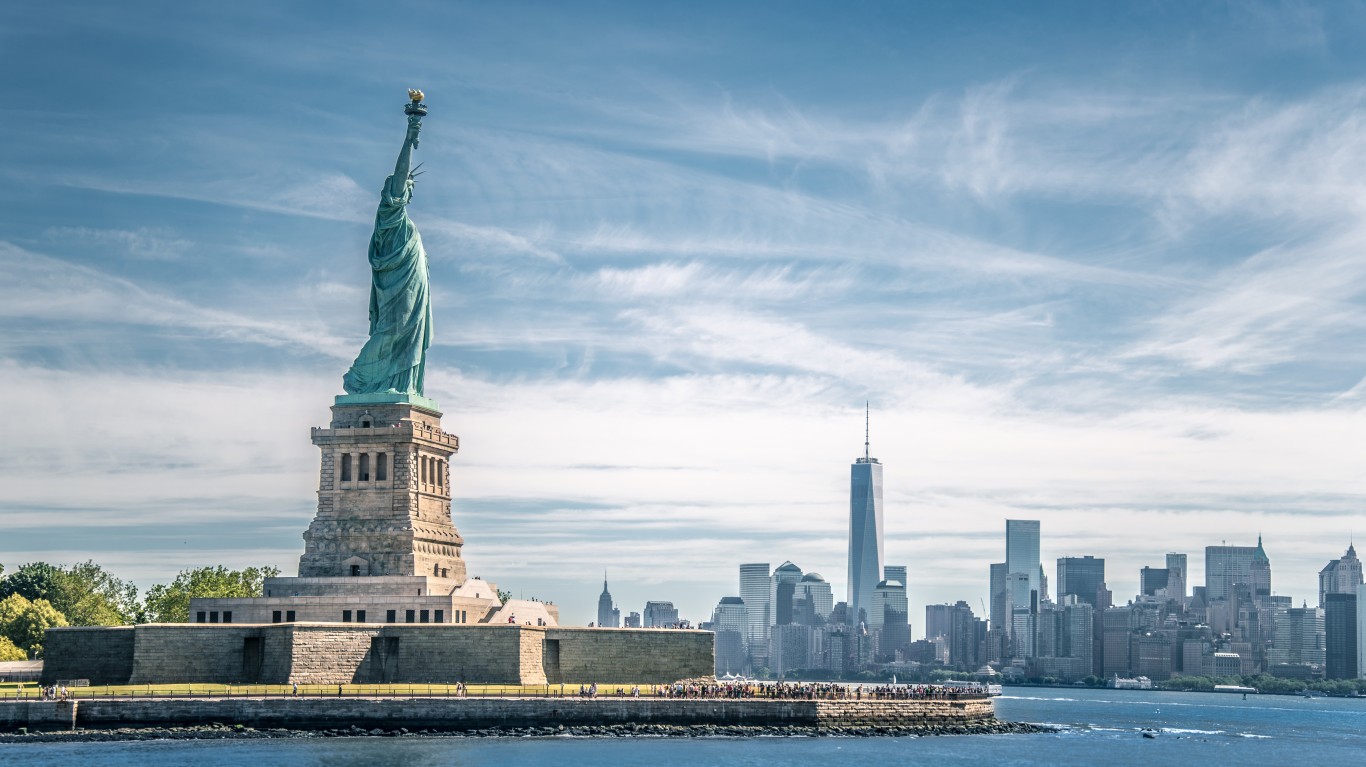 24/7 Wall St.
24/7 Wall St.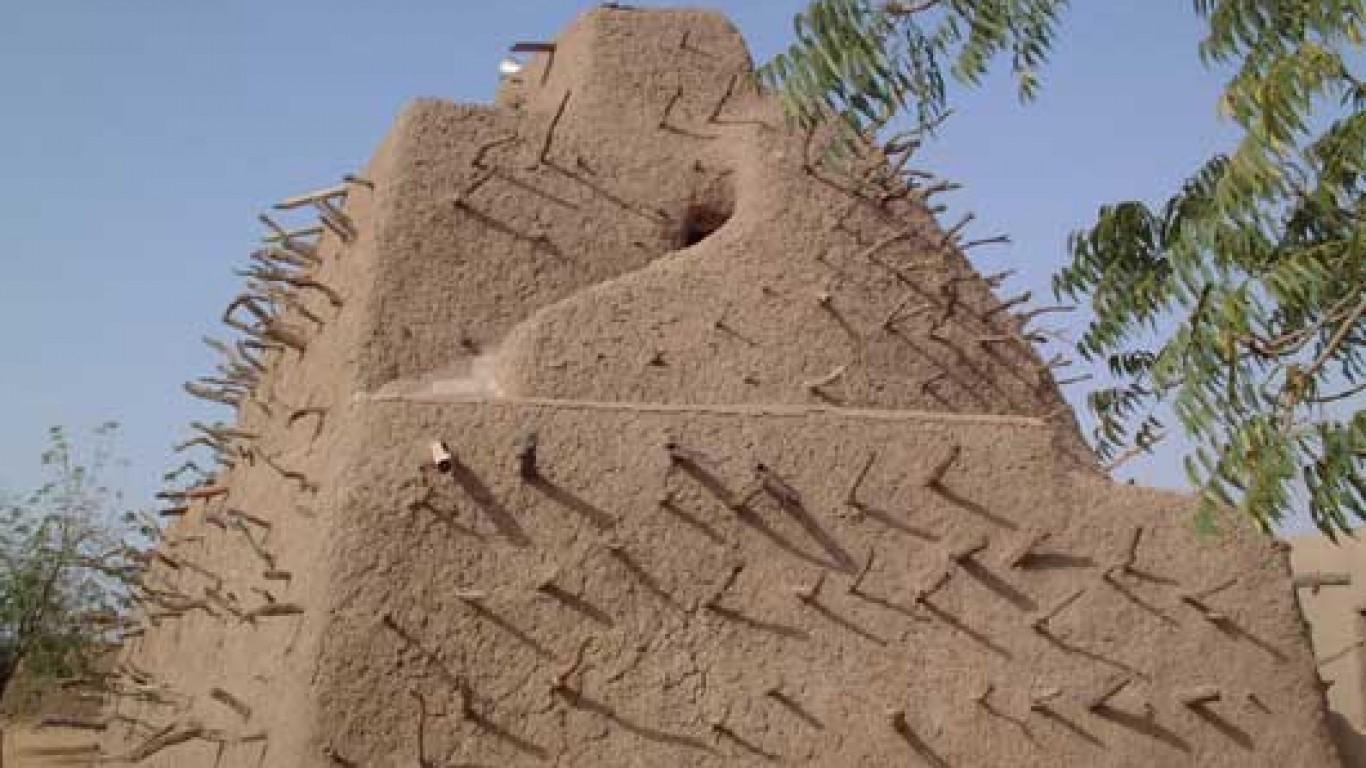
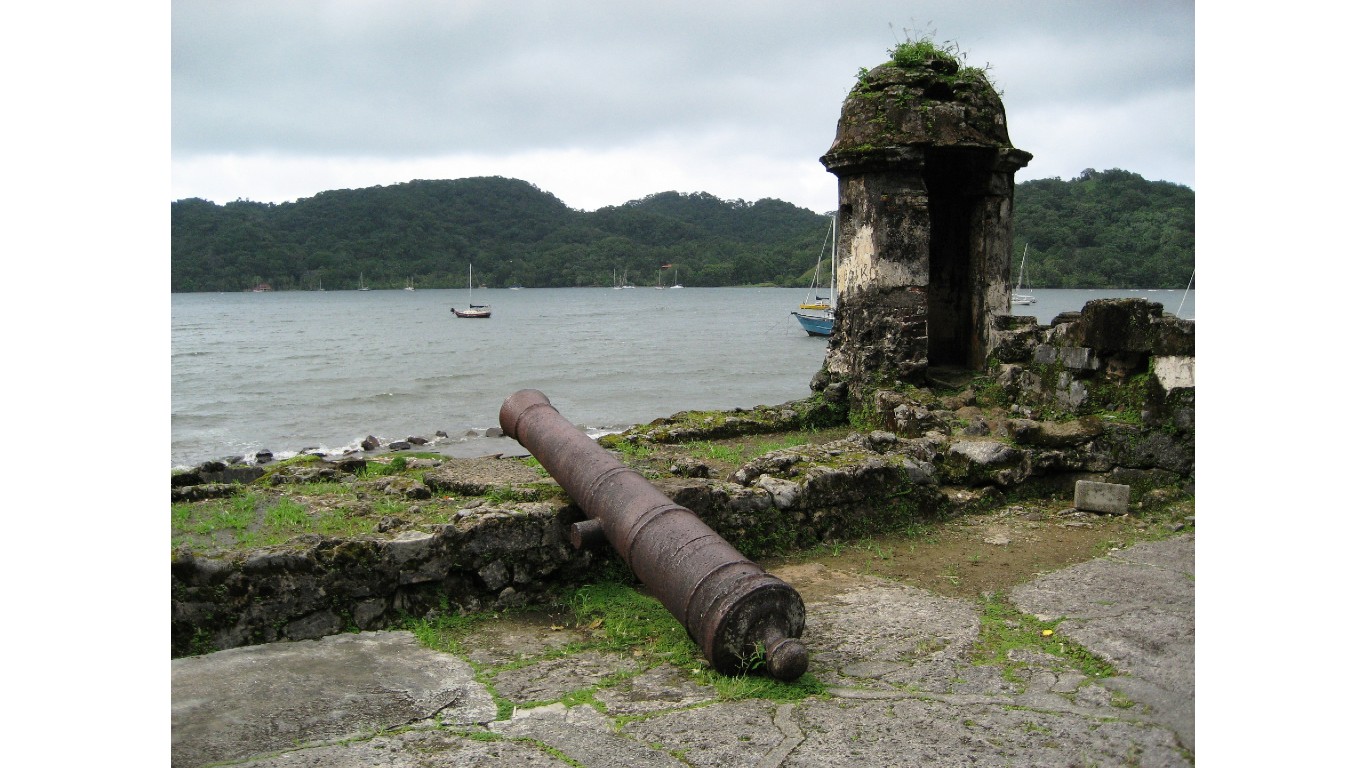

 24/7 Wall St.
24/7 Wall St.
